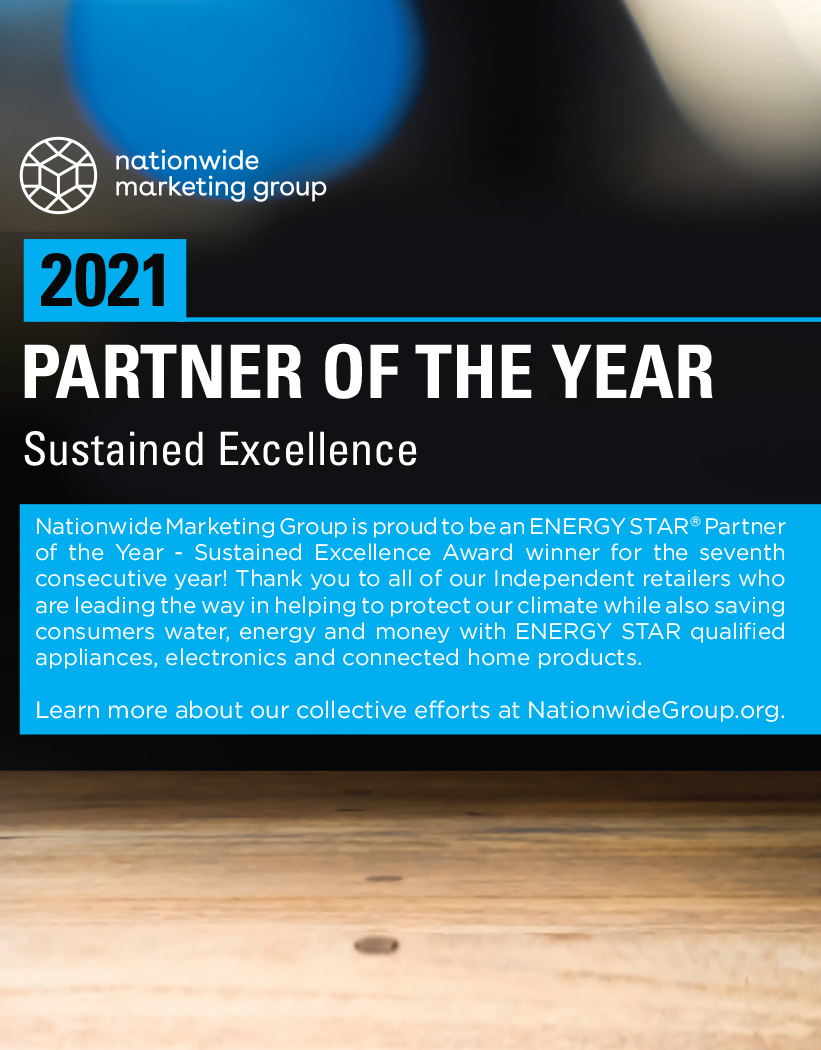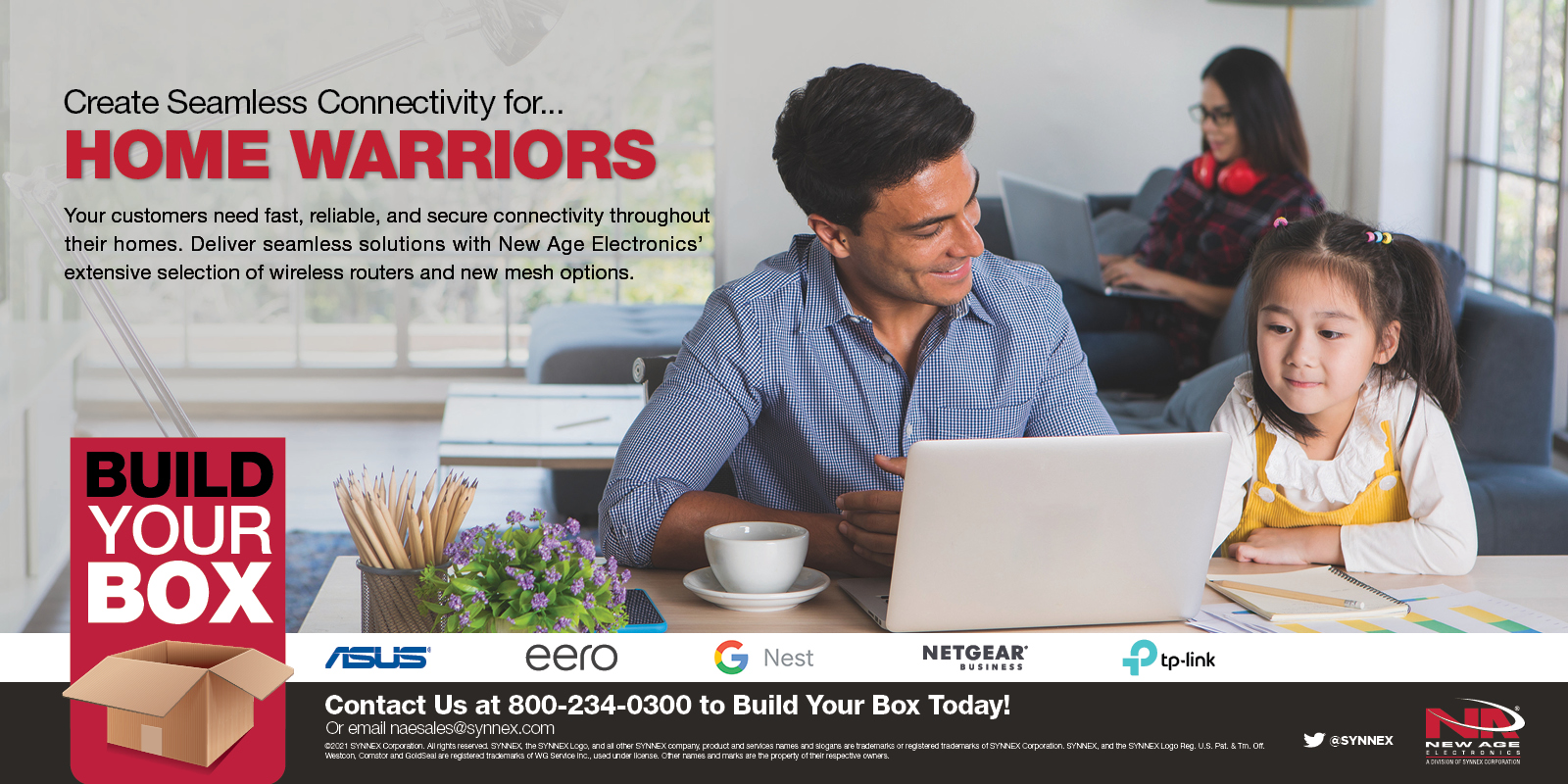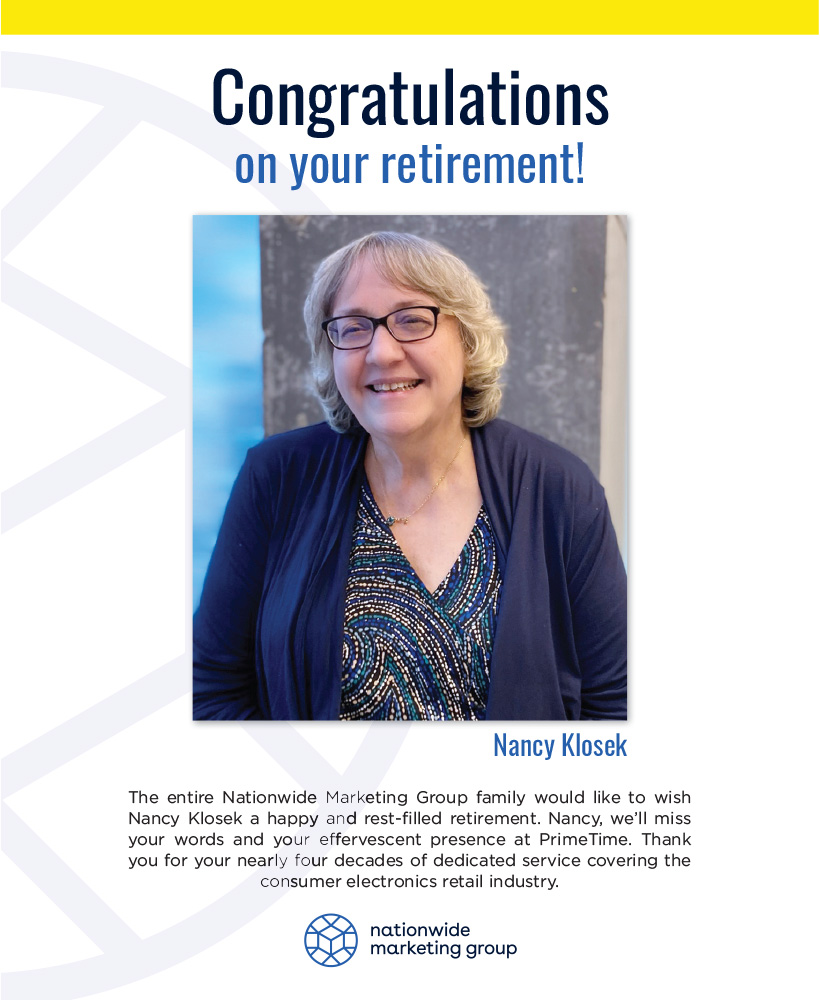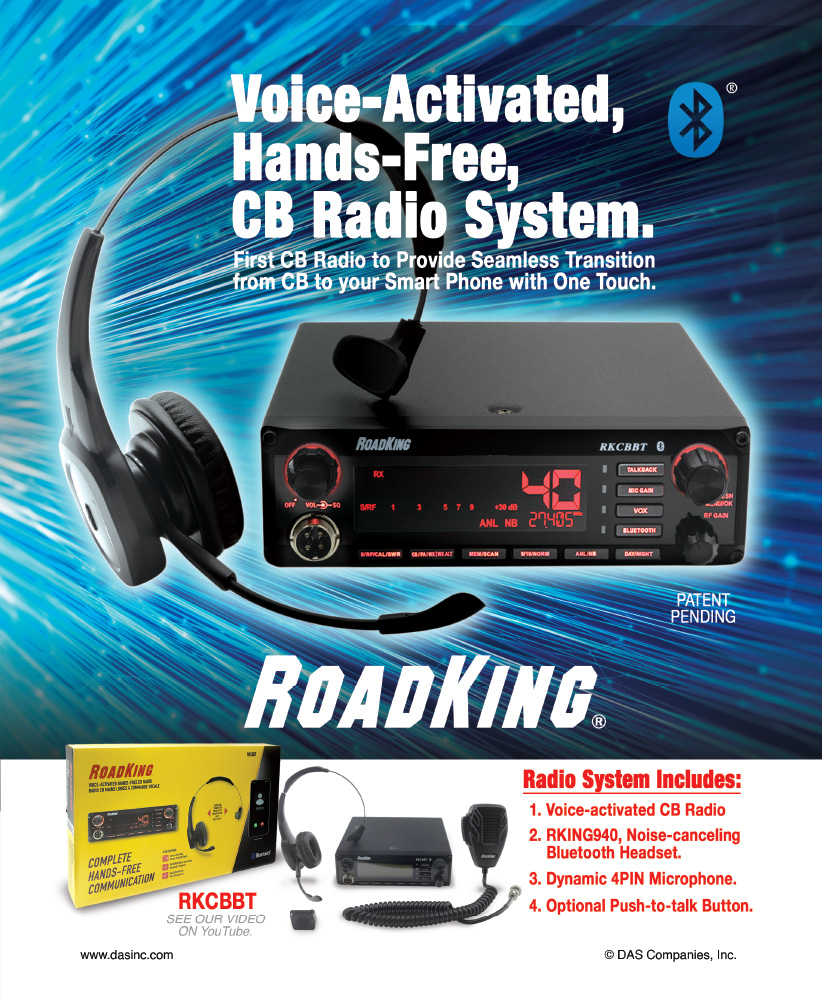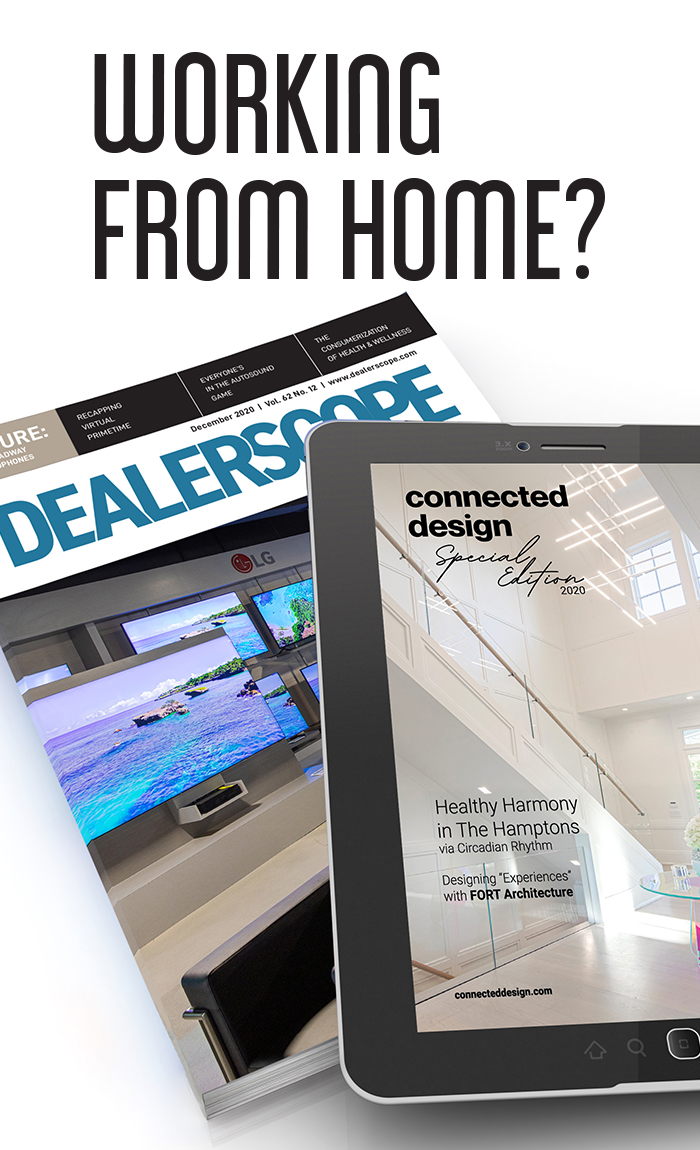Inside the Dealerscope May 2021 issue: “Robots in Retail” looks at all the ways that our industry is implementing automation to increase productivity, safety, and customer service. Plus, distributors share lessons from the pandemic, health experts break down the nutrition angle on kitchen appliances, and PC makers brace for the global chip shortage.

2021: The Year of the Robots

Shortly after the 2020 CES, I read that 2021 would be the year of the robots. Fast
forward to this year, and I am fascinated by how many have been accepted in our homes – and more are coming. So, I am thrilled to have this very subject as the main feature of Dealerscope’s May issue. Our Editor in Chief, Tom Samiljan, takes us on a journey as to what lies ahead in the robotics world.
In our Distributor Roundup this month, we look at how our distributors are coming out of the pandemic and how their dealer programs are changing. And speaking of distributors, Fred Towns, president of New Age Electronics’ division of SYNNEX and member of the CTA Board, will address the topic of Spring Accessories, with a look forward to and a focus on the Oculus 2.
From the founder of PTZOptics, there is also coverage of the ideal setups for a home/office studio. That leads me into telling you about a great story on what to expect in the wireless industry in 2021. I am also pleased to welcome John Quain to our team of Contributing Editors. John will cover the chip shortage and how it is affecting the PC market in the U.S. and Europe.
Jessica Guyon, our Digital Diva, also looks at the changes at Twitter, in this issue, and how they affect our business. Every month, make sure to look for our great content in Unboxed, Retail Rumblings, Stat Shot and other terrific features. In our “Retail on the Run,” department, we also had the pleasure of visiting California’s Video and Audio Center, where we spent time with President Joseph Akhtarzad. This was a great visit, with Joseph providing amazing insights from his business perspective.
We have been launching something new every month this year in our pages. In May, we are introducing “What’s Up?,” where we ask industry leaders to share their views on business, what their priorities are, and why Dealerscope is important to them. For this first chapter, I had the pleasure of having lunch with Dawn Pratt, CEO and founder of TechUp for Women, Toni Sabatino, president of Toni Sabatino Style, and the legendary Robin Raskin, founder of VEG (Virtual Events Group). What a wonderful event, and a meeting of great minds. Please make sure you see this new section.
I want to hear from you – what is important for your business, what helps you sell,
what you want to learn. Please always feel free to get in touch with me at
tmonteleone@ctlab.media.
Tony Monteleone, Publisher
A WORD FROM OUR EDITOR IN CHIEF
When Your Job is Replaced by a Robot, Lean Into the Opportunity

One of the things I love most about my job is getting to interview so many fascinating innovators, technologists, entrepreneurs, and businesspeople about what they think or work on. The “Robots in Retail” story in this month’s issue was no exception. I only wish I could have included every last quote from every person I talked with, though I also managed to get some other quotes from press conferences and panels on robotics that I attended at the virtual iteration of the 2021 Collision Conference, an annual North American offshoot of Europe’s much bigger Web Summit.
While attending a conference that focuses on all the ways that business, culture, and society intersect with technology, I found it hard not to think of all the ways that the pandemic accelerated many disruptive trends across all industries and technologies. Robotics in the retail space is no exception.
The surge in online orders over the past 14 months aside, there is a lot of interest and investment in warehouse robotics at the moment, which raises an obvious question: What happens to human workers when robots start doing their jobs faster and more precisely? With movies like Nomadland winning a Best Picture Oscar this year, the subject is as top-of-mind as robotics technology itself among businesses and consumers alike.
On one level, the rise of robots means that workers no longer have to walk 14 or 15 miles per day shuttling products across a warehouse; on the flip side, it also means they have to keep up with the ever-faster robots. But while some jobs that humans do now may indeed go the way of the dodo, new roles will emerge, which requires commitment and collaboration on the part of business and government sectors, as well as among workers themselves, who increasingly must be open to retraining and changing jobs on a regular basis. Last October, Amazon announced that it was investing more than $700 million in training programs to “upskill” workers into, whether those are jobs managing and maintaining robots or other jobs in areas such as data science or programming.
“There’s going to be this virtuous cycle,” said Melanee Wise, CEO of Fetch Robotics, at one of those Collision panels. Fetch Robotics makes cloud-based on-demand autonomous mobile robotics (AMR) solutions for warehouses. “We need to create incentives for companies to train these large groups of people for new jobs, and also support people who struggle to be re-educated or re-tasked. It’s a problem that we are struggling with societally, and we need to focus more on changing jobs on a regular basis. and re-education for job switching. The answer is not to stop developing technology; the answer is to fix our problems in society.”
There’s no denying that robots are cool. Dr. Eugene Izhikevich, CEO and co-founder of BrainCorp, which makes software for in-store robots that clean, among other services, doesn’t think it’ll be too hard to get people interested in job switching. “Many of our robots are deployed by janitors, many of whom didn’t graduate from high school,” said Izhikevich at that same Collision panel in April. “I asked one of them if he was afraid for his job and his reply was, ‘Are you kidding? I’m the robot guy!’ So think of this as robots elevating professions to the next level, where people feel good about what they’re doing.”

Tom Samiljan
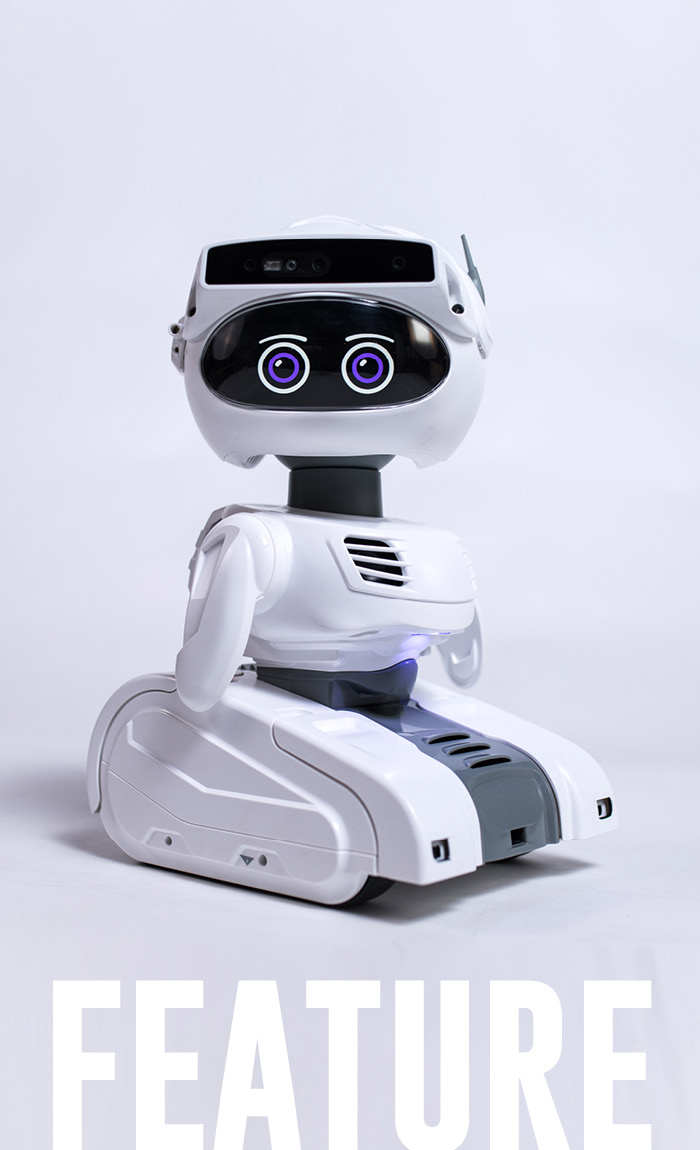
COVER STORY
Robots In Retail
Everywhere from warehouses to
in-store, the race to automate
shopping infrastructure is heating up.
BY TOM SAMILJAN
Quick, what’s the first thing that comes to mind when you hear the word robot? It’s likely anything from a walking, talking C-3PO-like bipod to a wheeled cylinder-like R2D2 to an unstable computer like HAL 9000. The truth is, just about anything mechanized that can pull off human actions can be considered a robot. It doesn’t need to look like a human, either. Because robots don’t necessarily have to walk and talk or even think much, they can be deployed in many different ways, both consumer-facing and behind the scenes.
The retail space is no exception. Social distancing and sanitization requirements over the past 14 months led to a surge in online ordering and a dearth of shoppers heading to the malls, which accelerated the use of certain types of robots in warehouses and brick-and-mortar stores. Some of those trends are here to stay, others not so much. Here’s a rundown of significant technologies and trends in the robotics in retail space.
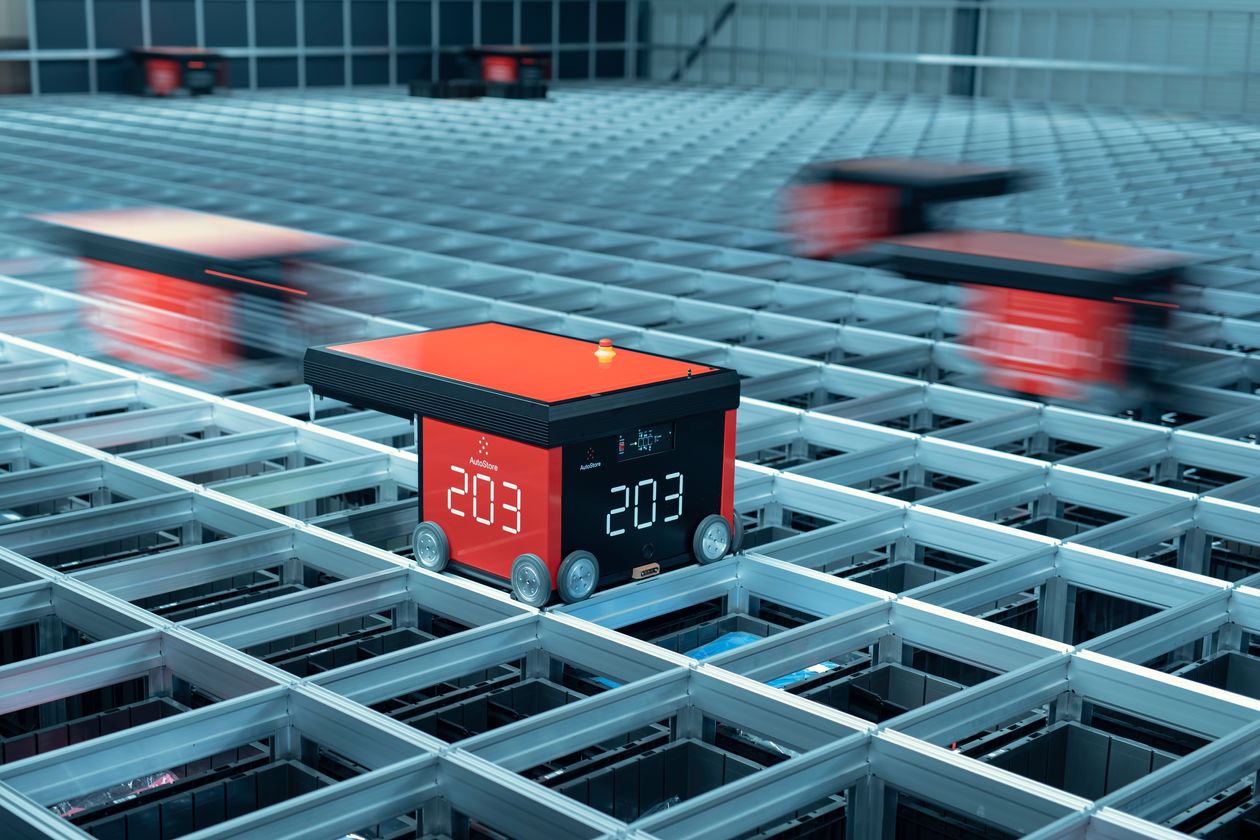
What’s In Store
“The general trend is that we’re seeing more robots in retail stores,” says John Harmon, senior analyst at Coresight Research. “That’s picked up quite a bit during the pandemic. The major applications tend to be among mass merchandisers and grocery stores.” Lowe’s may have had its LoweBot roaming the aisles answering shopper questions as far back as 2016, and Best Buy still has mechanized kiosks in airports and other public spaces across the country, but most of the in-store robots operating today are to be found in grocery stores or big-box stores that sell groceries. And on that front, Harmon says, “Walmart is the leader.”
Since 2018, Walmart has used robotic floor scrubbers at many of its brick-and-mortar locations and continues to expand its in-store robotics initiatives at its Sam’s Club subsidiary, with some clever iterations. The 372 new Tennant T7 AMR floor scrubbers that the warehouse club recently deployed to its retail locations will soon also have AI-enabled scanners that check for out-of-stock or mis-shelved items, as well as gather inventory data, mounted on top of them. It’s an ingenious hack that gives new meaning to the concept of multitasking.
In January, Walmart announced that it would be expanding its use of market fulfillment centers (MFC), essentially mini-warehouses attached to or inside of brick and mortar stores that contain thousands of products including groceries and consumer electronics. Purchased items are retrieved by a mix of humans and robots and then placed on a table, where humans put orders together for pickup by customers. The system has been in place at a Walmart in Salem, NH since 2019.
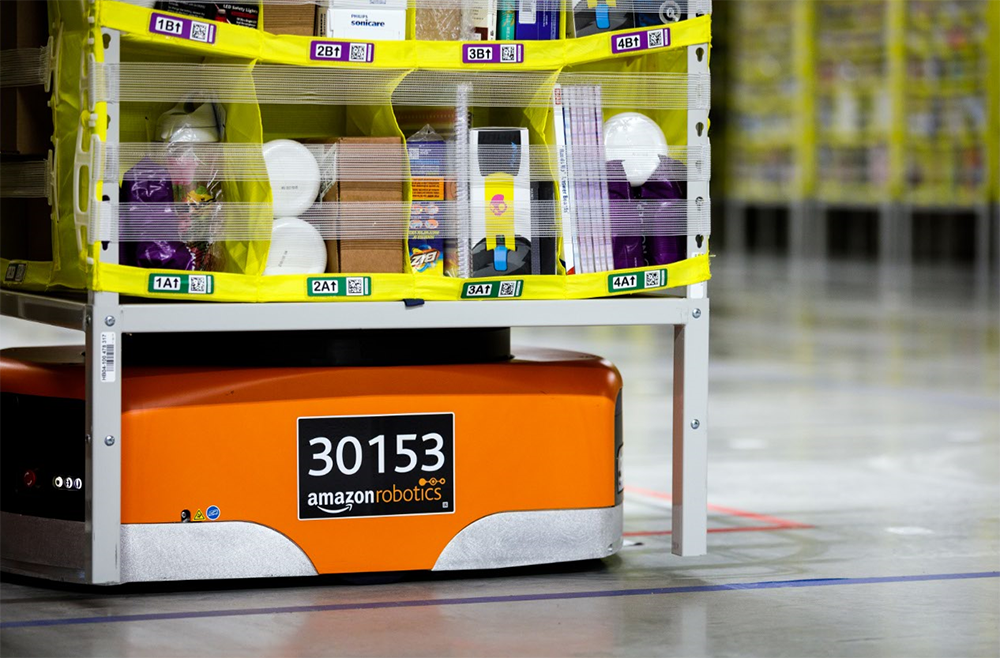
In other countries, some big-box and warehouse clubs have deployed robots. For example, French big-box chain Carrefour’s stores in the United Arab Emirates are using Simbe Robotics’s “Tally,” a tall pillar-like robot on wheels that uses computer vision-powered cameras to scan store shelves for items that are out of stock, mis-shelved, or mispriced. It’s then able to alert human stockers, who can surgically correct any errors or restock shelves without having to find these issues themselves. Tally’s built-in AI software also develops insight over time around what products are selling out and correlates that with other data such as discounts, weather, dates, and the like, allowing for better inventory and supply chain management; imagine if Tally robots had been more widespread during the shortages of toilet paper, sanitizer, flour, and other staples during the first months of COVID quarantine in 2020.
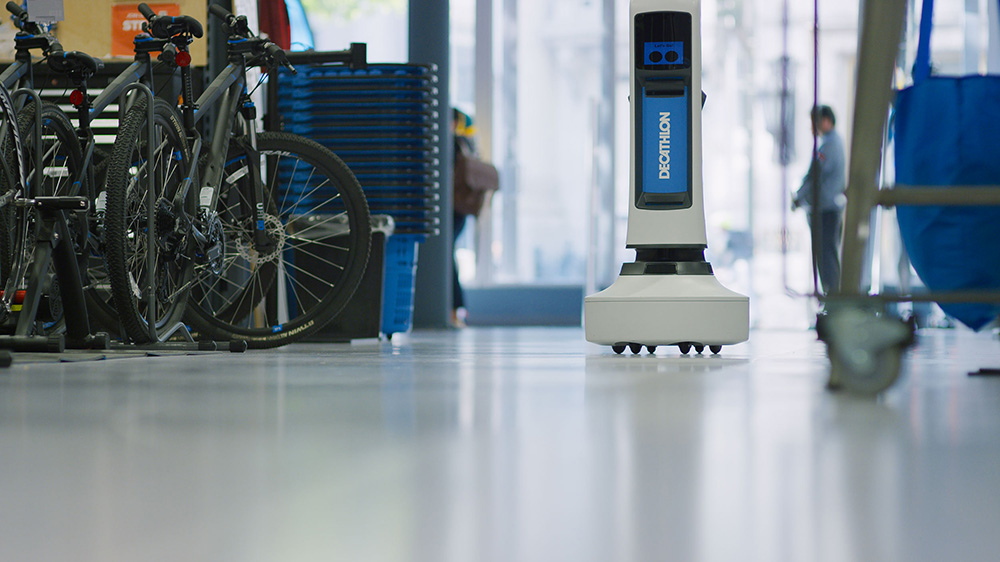
Moving Right Along
While Walmart is proactive in its robotics strategy, it acts as a lean startup when it’s time to pivot. For the retailer, the reduction in human foot traffic in brick-and-mortar stores didn’t result in inventory-scanning robots as a long-term solution. Late last year, the company pulled the plug on its partnership with Bossa Nova Robotics for an army of 1,000 stock-scanning robots at its stores. With more store employees scouring shelves to pick up delivery items in person for increased curbside pickups of the past 12 months, keeping track of on-shelf inventory was better handled the old-fashioned way. “It set the category back,” says Harmon. “I would say if they don’t work for Walmart, they probably won’t work for anyone.”
Walmart also recently pulled the plug on its automated pickup towers. Sort of a cross between Redbox kiosks and Amazon’s lockers, the pickup towers kept online purchases secure until customers came by in person, entered their information onto a screen, then sat back as the items were dispensed to them—not too different from a soda machine. With curbside service becoming the norm in 2020, and so many workers picking up online orders themselves and bagging them for consumers to pick up, these towers lost some of their relevance. The towers, at least, are technically on hiatus until Walmart figures out what to do with them as social distancing and mask requirements are removed and people are more comfortable going back to stores.
Walmart isn’t getting out of the robotics game by any means, however. “Robotics, along with a lot of other new and emerging technologies, will always have a role to play in terms of where we want to be both from the customer experience perspective but also an operational perspective,” said Walmart Executive Vice President and Chief Omni Strategy Officer Casey Carl to a Q&A session question posted by Dealerscope at the recent online Collision conference. “How will it make a better customer experience and how will it make it more operationally productive. If robotics is the right answer for that, then we’ll look at these sorts of things. We’re always testing new technology and innovations, asking ‘What could we do with this and how could we create more value for our customers?’” Such scrutiny and requirement for ROI will keep the robotics industry working hard to innovate and fine-tune its products, given Walmart’s size.
Other than Walmart, not many other retailers that sell consumer electronics or appliances are deploying robots in any meaningful way yet, which is surprising considering they are in the business of selling technology. “Somebody like a Best Buy could benefit a lot from robots fetching items for e-commerce in a fulfillment center,” says Harmon, “and certainly the trend has been for Best Buy and Target to ship from store lately. Best Buy’s new plan to convert some of the space in its stores to on-site warehouses and fulfillment centers falls in line with what Walmart is doing with its MFCs.
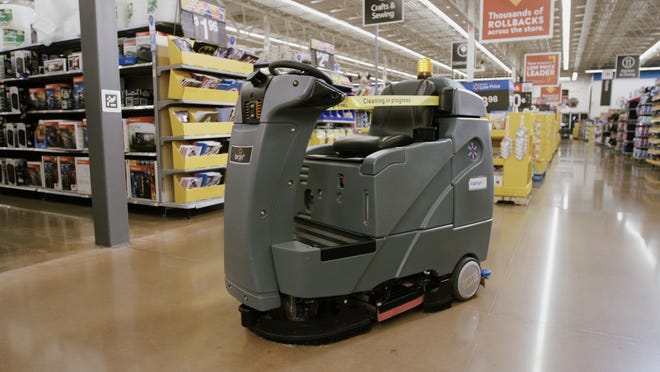
Big-Box Boom
Nowhere has the push to automate been greater than in the warehouse and fulfillment center sector, a trend that has been growing ever since Amazon’s 2012 purchase of Kiva Systems. Renamed Amazon Robotics in 2015, the soup-to-nuts fulfillment center solution is a human-machine “cobot” setup, whereby autonomous wheeled robots grab merchandise from designated pods and deliver them to humans to pack for shipment. The e-commerce giant now is estimated to have deployed approximately 250,000 robots at its fulfillment centers across the globe, spurring on a robotics race among investors and companies looking to leverage new technologies.
And Investors are taking note. Last month, The Softbank Group dropped $2.8 billion for a 40-percent stake of Norwegian robotics manufacturer AutoStore, which makes a warehouse robot known as “The Router” that maximizes storage space of products in big cubes, retrieving and re-organizing items on the fly at a superfast clip that has enabled it to create up to 25 percent more space for its warehouse partners. AutoStore currently has about 600 deployments around the world, many of which are small- and medium-sized e-commerce operations.
In recent years, Boston Dynamics has been better known for its two- and four-legged bipod and dog robots that could climb stairs or perform basic gymnastics and dance moves—some of the hardest robotics feats to pull off, but still not ready for mass business deployment just yet. Nevertheless, Boston Dynamics’s prowess with robotic legs gave it a particular edge with Stretch, the company’s first commercial robot, which was announced in April. Designed for warehouses, Stretch can move up to 800 boxes an hour with its versatile arm and sensor-laden smart gripper. Unlike many warehouse robots—Amazon’s included—that need to follow specific routes to move autonomously, Stretch’s computer vision capabilities are good enough to let it move around any space and easily recognize objects and boxes on its own.
The state of retail robots, like so much technology, is a mix of booms and busts, though it’s clear that warehouse robots are here to stay and flourish, and they can be leveraged by big-box giants and independent retailers alike. In-store robots, at least of the pricey and non-janitorial kind, maycbe a work in progress for many retailers. “[Robots] cost a lot and it’s hard to get your money’s worth,” says Harmon. “This is why Walmart abandoned these inventory robots.” Walmart (and Amazon) can’t and should not be doing this alone. It might be time for some of the more deep-pocketed retailers that carry CE and appliances to leverage their tech DNA and see where they can innovate on the robotics front.
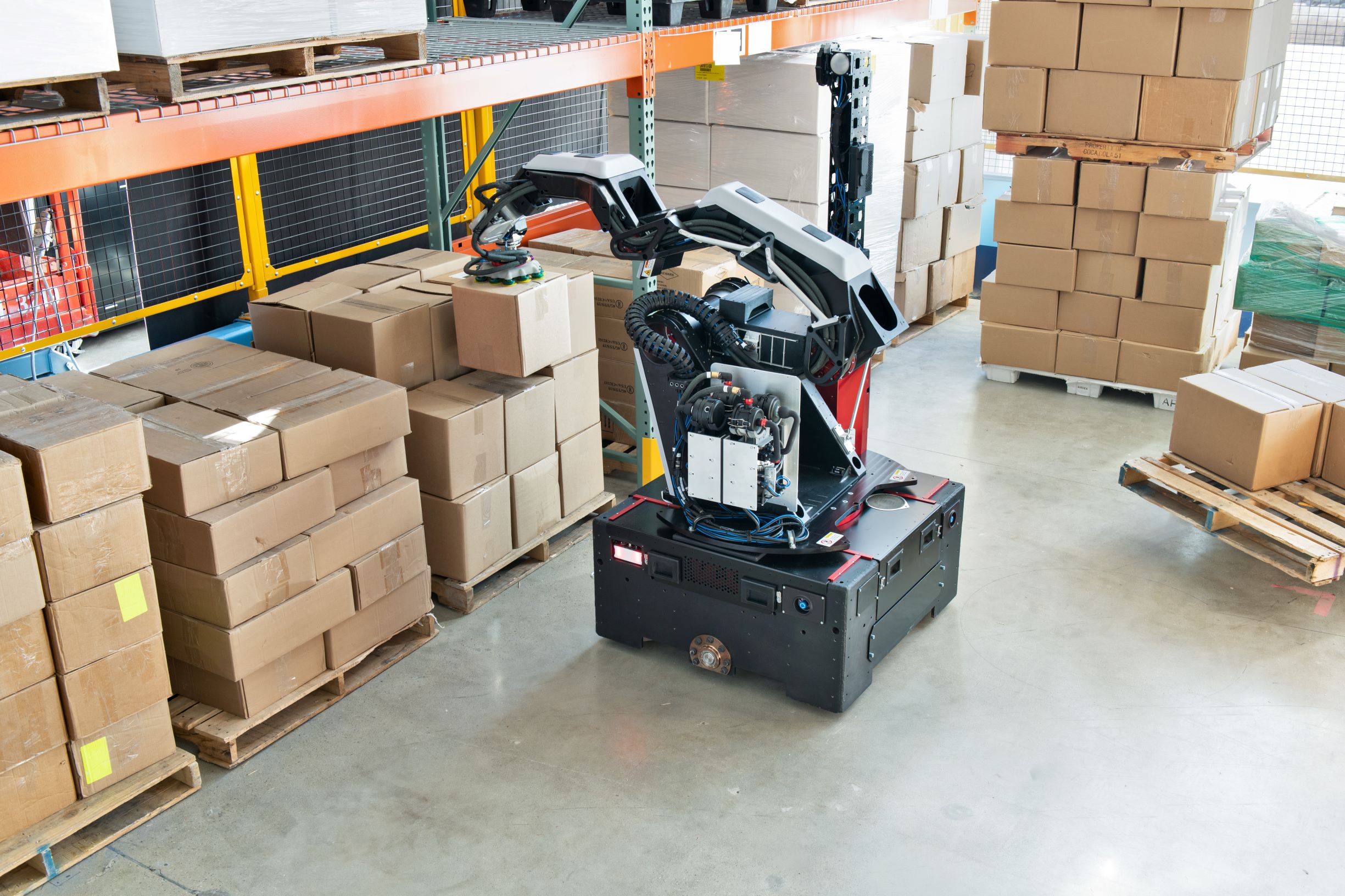

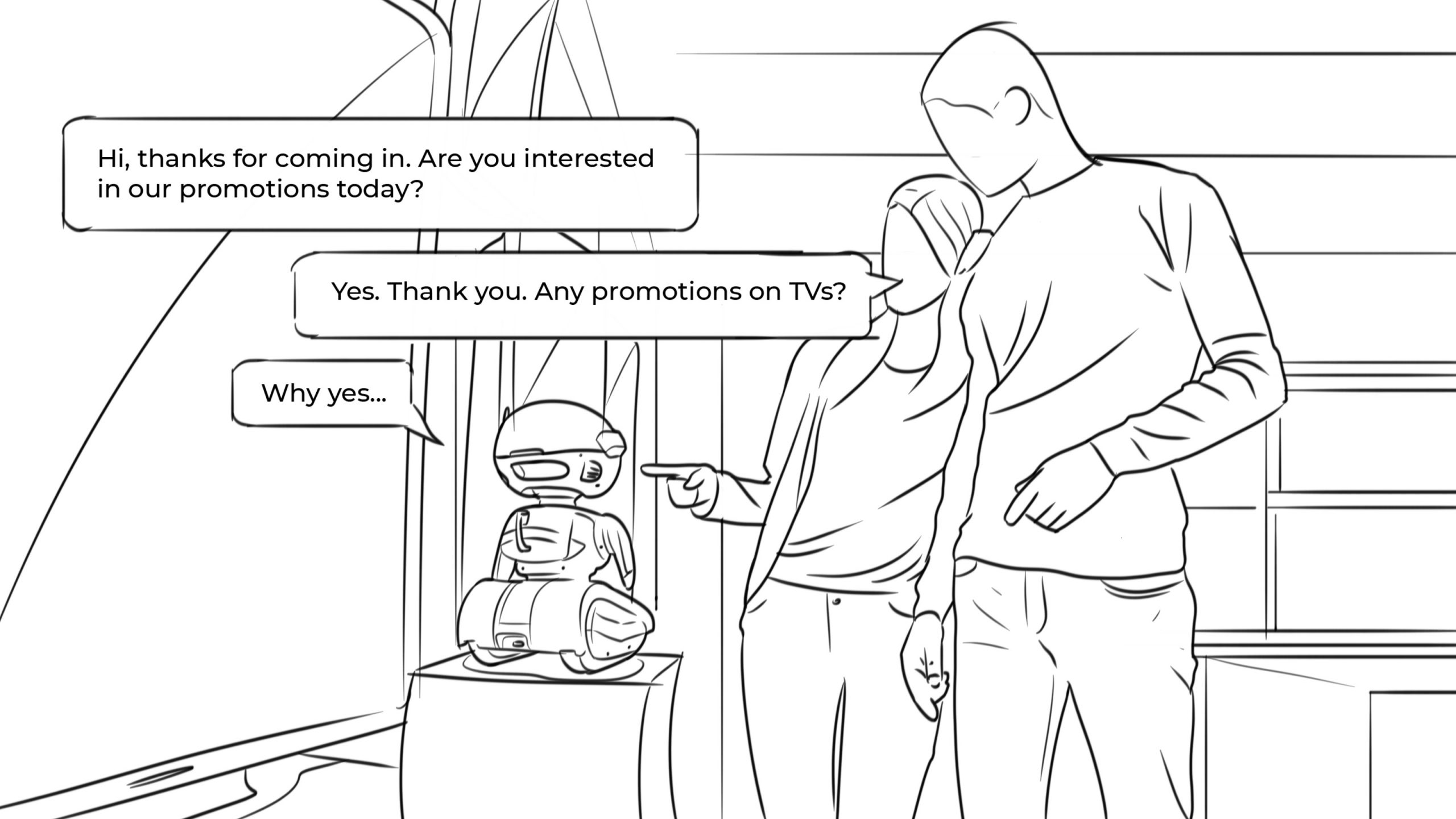

COVER STORY
DIY Deployment
Misty Robotics’s Ian Bernstein
has big plans for easy-to-program retail robots.
BY TOM SAMILJAN
In-store robots don’t necessarily have to do any physical heavy lifting or roaming around to help out in-store. Misty II is a shelf or table-top talking robot with a head that moves and a screen that displays expressions or other information. Created by Misty Robotics, the robot is designed to work in tandem with the company’s software development tools, which are easy enough for even non-roboticists to use. Any company’s in-house web or app development team can build custom applications for Misty II.

“Because Misty II is so small, it’s versatile and doesn’t necessarily need to drive around,” says the company’s founder and head of product Ian Bernstein, who earlier in his career developed the Sphero educational robot. “This comes in handy for answering questions about the location of merchandise or background on a specific product. It can easily be set up to have basic conversations and answer specific questions like “Where’s the milk” without anyone having to write a single line of code.” Bernstein is currently talking with retail companies about implementing Misty II in shopping situations, everything from directing customers around the store to recognizing them and notifying them of personalized discounts. Over the past 12 months, Bernstein’s team even set up a Misty II robot to take people’s temperatures as they entered eldercare facilities. Developers swapped out the built-in GPS and replaced it with a thermal camera, enabling the robot to detect people’s eyes and specifically their tear ducts to calculate their temperatures. –TS

COVER STORY
Small Is Beautiful
2unify’s hands-free robotic guitar tuner is just
what music stores and schools needed.
BY TOM SAMILJAN
In-store robots don’t even have to be deployed at scale. Toronto-based 2unify has created the 2unify Stand, a fully automated, hands-free robotic tuning device for guitars. “Our customers have been amazed because they’ve never seen anything for tuning that’s fully hands-free,” says 2unify Co-founder Michael Jobity. “Existing solutions require integration into the guitar itself or active participation by a human, and human guitar tuners can be expensive.” At around $1,000 (Canadian), the Stand is priced well for guitar stores, music studios, and schools. Powered by AI to listen for tones and sense where it is, the Stand’s robotic hands strum and individually turn each peg until the guitar is tuned. The device can tune several guitars of differing sizes and styles in five to 20 seconds at most, depending on how out of tune a guitar is, which is faster than many humans. “We’ve been selling mostly to music businesses because they generally have a large volume of guitars,” says Jobity, “but also STEM companies and schools, as well as parents who like to get them for their kids.” Given the interest in robotics in education, 2unify is also now offering the robotic arms that are attached to the Stand as a standalone kit that kids can use to learn the Python programming language. 2unify is still a young company and its sales so far have been entirely in Canada. “We’re definitely looking to expand to the United States,” says Jobity.–TS

COVER STORY
Robots For Sale
Tech trade shows are filled with prototype robots that will never see the light of day, but these new devices are either already available or due for release this year.
BY TOM SAMILJAN

The smaller, more affordable version of the Vaonis Stellina at $1,500, this robotic telescope sits on a tripod, and the device finds constellations on user command from an iPhone app, spinning around 360 degrees and moving its square-cylindrical telescope
camera into position. Gazers view constellations in real time on their smartphone screens, and captured images can then be shared on social media and the like. vaonis.com
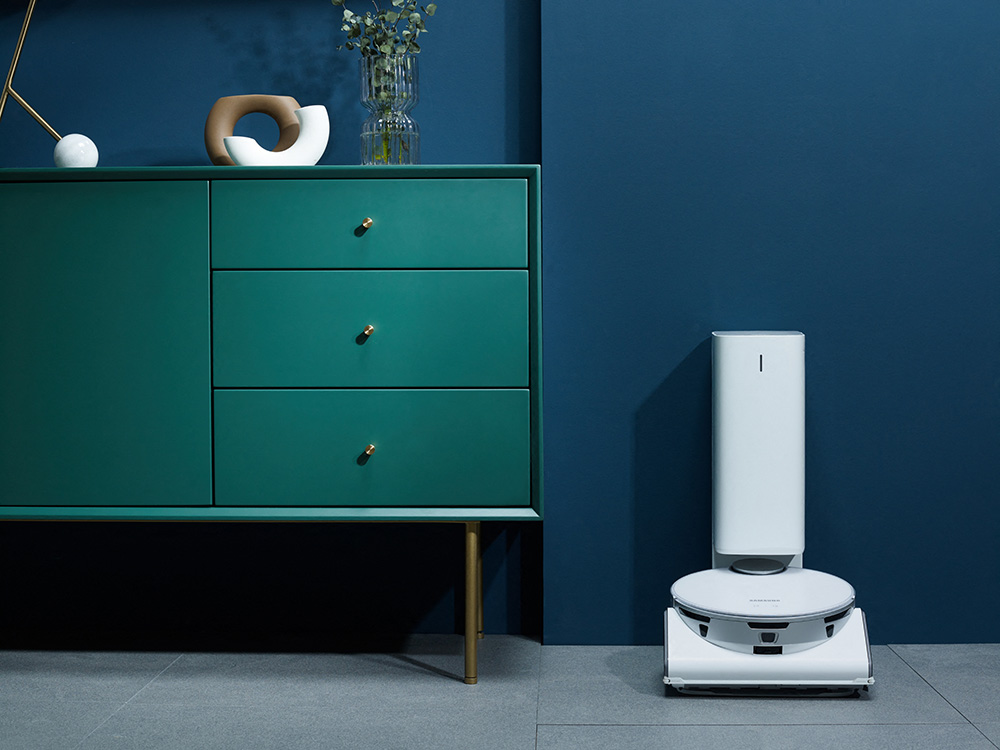
Samsung JetBot 90 AI+
Featuring LiDAR sensors and a camera with robust computer vision to recognize objects big and small from up to 20 feet away, the JetBot 90 AI+ robotic vacuum actually detects different types of furniture, which enables it to more accurately maneuver around rooms. This comes in handy when it’s doubling as a roving home security monitor that can be accessed remotely via the Samsung SmartThings app. samsung.com

UBTECH ADIBOT
Aimed at schools, hospitals, and hotels, but for sale to anyone, these wheeled robots — one that moves on its own, the other that needs to be manually rolled — use computer vision, LiDAR, and other sensors to target surfaces in any room and disinfect them via blasts of UV-C light. Safety-wise, ADIBOT detects the presence of humans and immediately shuts off to keep dosing you with ultraviolet rays. ubitech.com –TS

CE RETAIL TECHNOLOGY
May 2021 CE News
Chip Shortage Expected to Last Through 2022 | TSMC, a major chip manufacturer for AMD, Apple and Qualcomm, is preparing for at least another 18 months of semiconductor shortage. The company has made a three-year commitment of $100 billion to boosting its manufacturing, though some of these plans, including a new Arizona factory, will not be complete until 2024. This could halt or severely impact the release of new smartphones and PCs.
PayPal Reigns Supreme Over Apple Pay | After an analysis of various retailers’ mobile apps, Incognia, a location identity company, found PayPal to be the preferred option of in-app payment by retailers. A whopping 80 percent of retailers supported PayPal while just 20 percent supported Apple Pay. “For retailers, the purchasing experience is critical to the customer experience,” André Ferraz, founder and CEO of Incognia, said in a statement.
Target Tests New Model for Faster Shipping | Target is turning to its own team for help in getting packages out to customers even faster. The new approach begins with employees picking and packing orders, and transferring them from the store’s backroom to a sortation center throughout the day. With the help of Grand Junction, Deliv and Shipt — three companies Target acquired — the packages will be grouped by their most efficient routes and delivered to their final destinations.
Apple to Take the Stand in Antitrust Case | Apple’s Chief Compliance Officer, Kyler Andeer, has agreed to testify before the U.S. Senate on competition issues related to mobile app stores. App makers claim that mandatory revenue sharing and strict inclusion rules set by Apple’s App Store and Google’s Play Store foster anticompetitive behavior. Google has also agreed to testify at the hearing.
Vaccinations and Stimulus Checks Have Retail Sales Soaring | Retail sales from March saw their biggest gains since May 2020 when stores first reopened after forced closures. Sales nearly doubled Wall Street’s 5.5 percent increase estimate, and came in at a seasonally adjusted 9.8 percent. On top of that, employers added the most new jobs since last August, and consumer confidence rose to its highest level in a year.
INTERNATIONAL PERSPECTIVES
Lust for Laptops
Globally, PC sales trend upward, despite chip shortages.
BY JOHN R. QUAIN
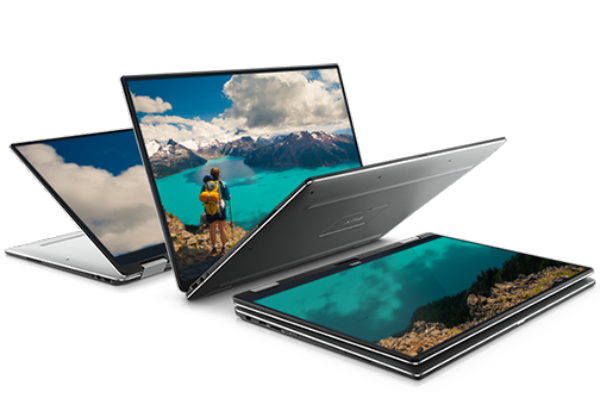
Dell XPS 13 (pictured above)
With smartphones and the hoteling of offices on the upswing, PC sales were once thought to be on the downswing. It would be a world of tablets and mobile phones in the future. But the pandemic changed all that. PC sales have been soaring while chip shortages are pushing up prices and causing concern throughout the industry.
In Europe, where rolling lockdowns afflicted country after country, in 2020, there was a 43 percent sales increase year over year of notebook PCs, according to new data from GfK. And while enterprise IT departments all but shut down spending during the early months of the COVID-19 pandemic, working-from-home consumers created a surge in demand, spurring the charge for new computers.
“There was an overwhelming demand for electronics in general,” acknowledged Josh Wanderman, GfK´s vice president of global market insights, “but in particular for laptops and notebooks.” And that helped create a shortage of processors.
“For the electronics world, COVID was a one-two punch, first due to manufacturing shutdowns, and second was the ‘work-from-home’ surge of demand for laptops, tablets, etc.,” said Steve Oliver, vice president of corporate marketing and investor relations at Navitas Semiconductor. That, in turn, drove resulting 26- to 52-week lead times for silicon chips, he said.
Retailers can expect the trend to continue well into this year, said Wanderman, with a 12 percent rise in unit sales of laptops in the first 10 weeks of 2021 in the five largest European countries (the U.K., Germany, France, Italy, and Spain).
Meanwhile, chip and, in particular, CPU shortages have helped drive up prices. Dollar sales for the same period increased by 28 percent, a reflection of the shortages and consumer shift to faster and more premium-priced laptops. It also revealed consumer sentiment that home-based work and study would become more of a long-term situation, justifying greater investment in the technology.
Similar trends were seen in the U.S. last year, with overall PC sales, including desktops, up 13.1 percent in 2020 over 2019, according to IDC.
As a result, worldwide semiconductor revenue totaled $466.2 billion in 2020, an increase of 10.4 percent compared to 2019, according to Gartner, Inc. It was led by demand for graphics processors, 5G chipsets, and PC demand, according to Gartner. Simultaneously, the chip shortage has sparked concerns over the supply of not only laptops but also everything from communications equipment to cars.
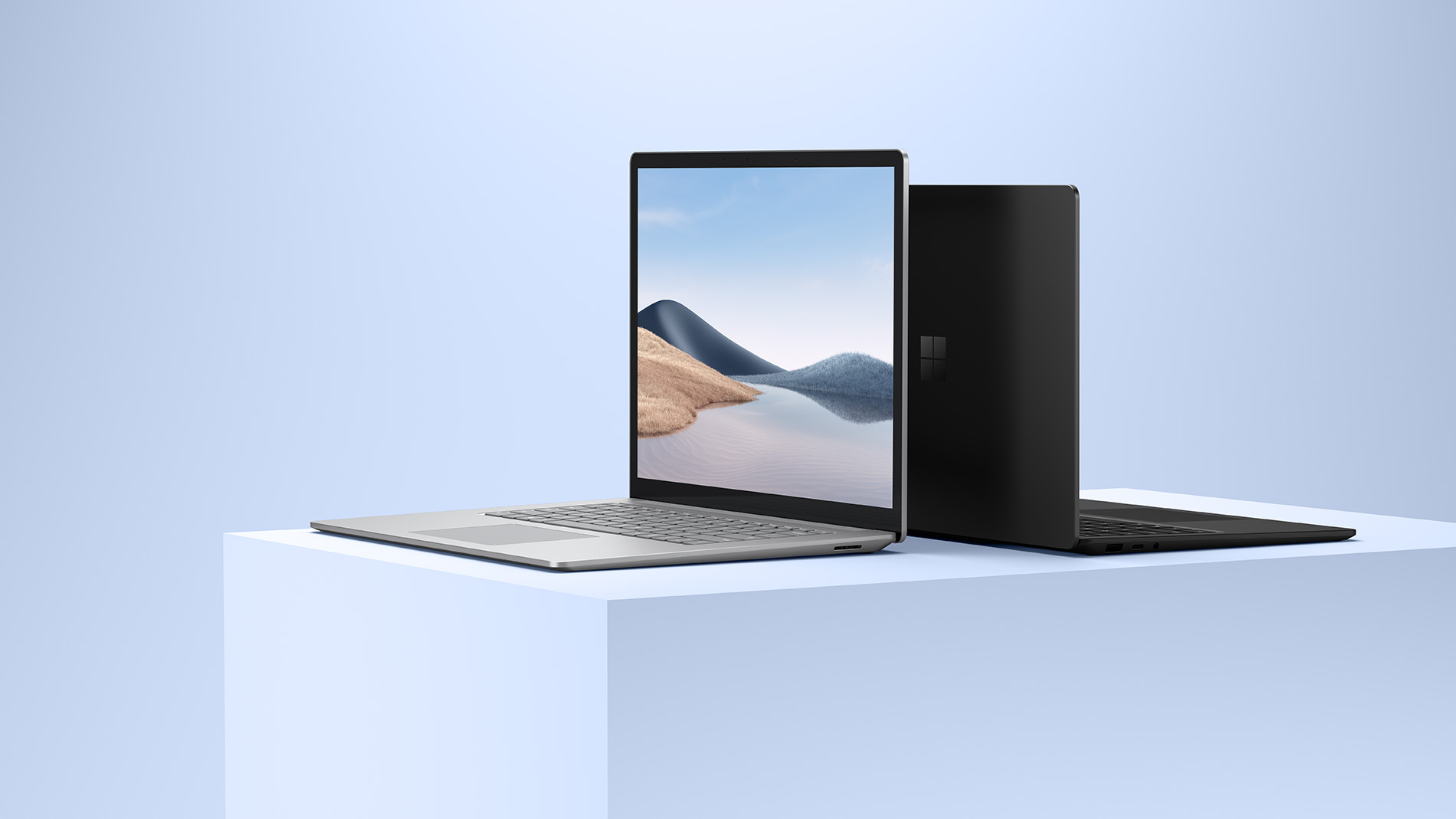
Microsoft’s new Surface Laptop 4
It’s why Michael Dell attended a virtual semiconductor summit initiated by the White House on April 12. In a statement to Dealerscope, the company underscored the fact that semiconductors are critical to everything from vaccine deployment to remote learning, and that a long-term solution to the semiconductor problem is needed.
But advanced chip fabrication plants cannot be built overnight. “There is very little slack in manufacturing capacity, plus a minimum 12-week throughput time, so it could be two to three quarters before supply chains recover,” said Navitas’ Oliver.
On the other hand, “every government around the world sees this as a national security issue and as a result is throwing a lot of money at this,” said GfK’s Wanderman, predicting that while chip shortages won’t ease up in the next couple of months, things might look better by the end of the year.
In the meantime, how high will prices for laptops and notebooks go?
While it’s difficult for anyone to predict, there have been threatening signs of inflation. U.S. consumer prices rose sharply in March, for example. The Labor Department reported that its consumer-price index — which measures what consumers pay for everyday items including groceries, clothes, recreational activities, and vehicles — jumped 2.6 percent, the biggest 12-month increase since August 2018. While nearly half of that increase was due to a 9.1 percent increase in gasoline prices, it has caused the Federal Reserve, among others, to focus on inflation concerns.
Meanwhile, “COVID-19 has had an unprecedented impact on IT sales, changing consumer behavior for the long term,” says GfK’s Wanderman. He said some of the continued demand for laptops is the result of pent-up demand among consumers who were unable to get the products they wanted earlier. They’ll have even more models to choose from: In April alone, Acer, Dell, Microsoft, and Razer either released or announced new laptop models for the spring. So the price increases won’t continue forever, he said: “At some point, that growth is going to go down.”
Summary:
- In Europe in 2020, there was a 43-percent sales increase year over year of notebook PCs, per GfK.
- The five largest EU countries experienced a 12-percent rise in unit sales of laptops in the first 10 weeks of 2021.
- Analysts expect continued high demand and global chip shortages through the rest of the year, even as people head back to offices.

Video
4 Tips to Transform Yourself into a Video Person
High-quality video production with a skeleton crew and a shoestring budget is easier than you think.

By PAUL RICHARDS, Director of Business Development for HuddleCamHD and PTZOptics.
Paul is also the author of several books, including: “Helping Your Church Live Stream,” “The Virtual Ticket,” and “The Online Meeting Survival Guide.” As the Chief Streaming Officer at StreamGeeks, Paul teaches his audience each week about topics focused on live streaming. In addition, Paul leads a free online Udemy course called “Helping Your Church Live Stream 2.0,” where he has reached more than 35,000 students interested in learning more about live video production and mobile streaming.
We’re all on camera now. Prior to the pandemic, I knew plenty of people who taped over their laptop’s built-in webcam lens, certain that its only purpose was to allow hackers to spy on them. Now, a lot of those same friends and acquaintances have dedicated videoconference lighting. Broader sampling reflects my personal experience: At the end of 2019, Zoom averaged 10 million meeting participants per day. In April 2020, it reported getting 300 million. Video has become one of society’s primary methods of daily communication. As a result, standards for video experiences have risen.
Organizations that never expected to provide video experiences of any kind — businesses, schools, houses of worship — are now regularly charged with creating engaging, interactive, real-time video. Retailers that previously relied on in-person traffic for browsing and shopping are now finding that both pre-recorded and live video are an essential part of the omnichannel playbook. On top of it all, many of these organizations have no choice but to undertake these efforts with skeleton crews. 2020 was a rough year, financially speaking. Few organizations could afford to take on new employees specializing in video production. What’s more, social distancing requirements and strict gathering size limitations often precluded building out a large video production team, even for those organizations that could afford to hire. Increasing the size of, say, a church’s AV production team is a non-starter when only 10 people are allowed to be in the building.
The pandemic created a vast need for enhanced video production that can be executed by a small team at an affordable price point. End-user ingenuity and technological innovation has flowed into that gap. It’s easier to pull off than you’d think, given the right approach. Below, I’ll explore my four favorite video production hacks to enable affordable, high-quality video production.
1. Let the robots do it.
Robotic cameras have grown incredibly capable. Motion sync has improved so that the pan, tilt, and zoom actions of a remotely controlled camera better mimic the movements of a manual operator. Even more impressive, though, is the fact that some cameras no longer require a human operator at all. Cameras equipped with auto-follow features can follow a subject — such as a teacher, pastor, or presenter — around a predefined space, keeping them centered in the frame.
After defining a capture area with built-in software, these AI-driven cameras can find and follow a presenter as they move through the area. Computer vision algorithms can now successfully differentiate between the shot’s intended focus and other motion: The camera won’t be distracted by flashing lights or restless audience members. It’s even possible to create “trigger zones” within the capture area that initiate pre-programmed commands when the subject enters them. For instance, the area in front of a lectern can be programmed as a trigger zone so that every time a speaker steps up to the mic, a graphic showing the event title and logo pops up at the bottom of the screen.
2. Empower non-experts to assist with video production.
Video production is a nuanced art that takes many years to master. It’s also fun. Schools, churches, and even businesses often have a healthy population of volunteers who will gladly assist on video production in exchange for learning some of the ropes. Allowing volunteers to participate in the production process may seem risky, especially in a real-time scenario such as a worship service on Zoom or a Facebook Live sale, but it is possible to create appropriate technological boundaries and fail-safes.
Attention to the initial system setup pays massive dividends here, too. Using camera control software or hardware, the camera system can be programmed with presets defining the proper camera selection, position, and zoom for various scenes. These presets ensure that volunteers aren’t overwhelmed by options when they sit down at the controls — all they have to do is push the right button for the scene. Some control devices can even be locked into “safe” or “basic” mode, allowing access to presets but preventing the user from changing any settings they shouldn’t.
Many network-connected cameras and control devices also have web interfaces, which offer another safety net for volunteers. If one production lead is managing several less experienced team members, a web interface can allow them to immediately correct any mistakes remotely from their tablet or smartphone, wherever they happen to be within the space. Conversely, team members can be given access to simplified, “basic mode” controls via a web interface instead of giving them unfettered access to the control console.
3. Use one camera to do the job of many.
Most organizations don’t really need 4K video. If they are livestreaming over a platform like Zoom, they in most cases can’t broadcast a resolution higher than 1080p. However, some 4K cameras have dual outputs, allowing the user to capture two live shots from a single device. The camera captures a single, high-resolution field of view. The outputs each show a 1080- or 720-pixel section of that capture. By switching between the two outputs, the user can mimic a multi-camera setup. For instance, when filming a tutorial or product demonstration, the stream can toggle between a wide shot and a close-up.
In some cases, the camera output can also electronically “pan, tilt, and zoom” (PTZ) across its field of view. In this case, the camera itself doesn’t actually move. Instead, it sends different parts of its field of view to the output. These “ePTZ” cameras can thereby imitate the movement effects of their robotic standard PTZ cousins, especially in live video situations where HD rather than 4K video is required.
4. Take advantage of free training resources.
There is a robust online community ready to support those interested in learning more about DIY production. Free video production software tools like Open Broadcaster Software (OBS) often have lively user forums, packed with both extensive guides and documentation, as well as video enthusiasts who will gladly help troubleshoot specific issues. Equipment manufacturers can also be a wealth of knowledge. My own company, PTZOptics, offers free training resources including a detailed knowledge base, online Udemy courses, and live shows — and the skills you can pick up here can be applied to any kind of camera, including non-PTZOptics models. It’s in a manufacturer’s interest to provide rich video production resources to their end users because we want them to get comfortable with and love using cameras. The more users become the kind of video enthusiasts who are assisting others on online message boards, the happier we are.
There’s a difference between being on camera and being a video person. Those who are on camera may join a community, but video people create communities. They offer a window into remote events. They manage teams of volunteers. They create engaging content that captures the viewer’s attention. Take advantage of resources, technologies, and learning resources that have emerged in the wake of the pandemic. You can become the “video person” for your organization.
SUMMARY
- The pandemic placed video production in high demand at a time when resources were scarce.
- Technological innovations like AI-driven robotic cameras and programmable control interfaces have made it possible to achieve broadcast-quality productions with a lean team.
- Free training resources can help you build your expertise.
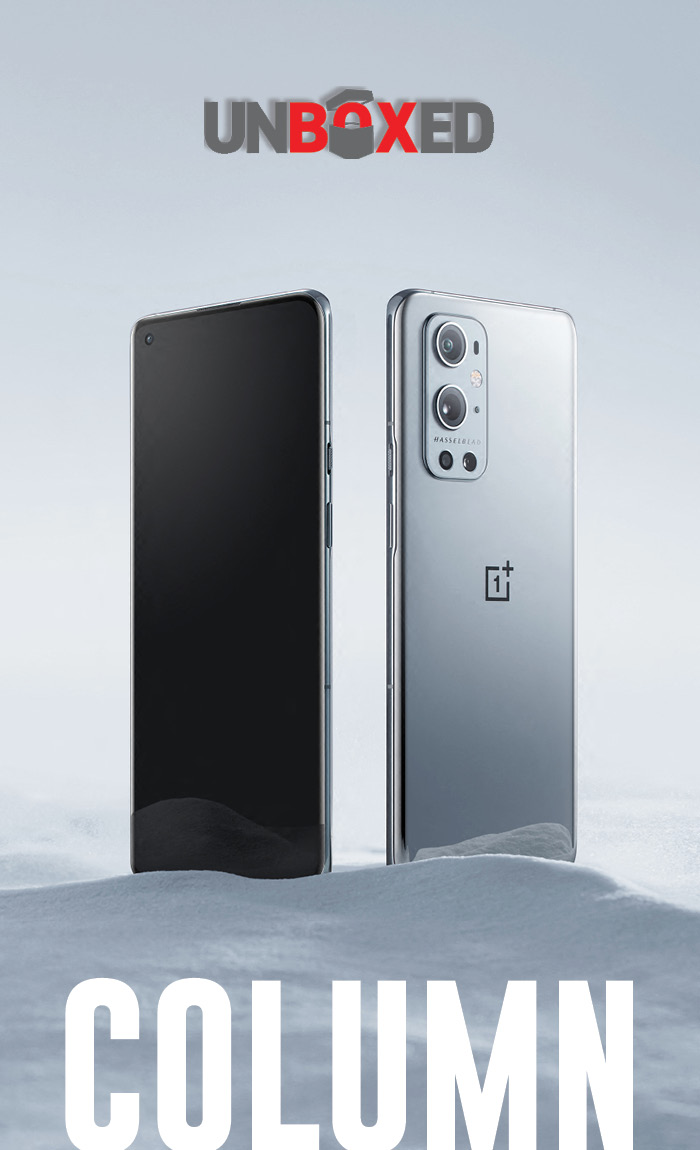
UNBOXED
OnePlus Comes of Age
The quietly cool Android manufacturer’s new 9 Series smartphones and first-ever smartwatch are worthy alternatives to the iPhone, Galaxy, Pixel, and other famous flagship competitors.
BY TOM SAMILJAN
While nothing beats the fan base of the iPhone, some Android brands such as Samsung Galaxy and Google Pixel have plenty of loyalists. Thanks to its sleek designs, bang-for-your-buck technology, and some of the coolest branding and packaging of any smartphone brand, OnePlus, which has been releasing new generations of its eponymous Android flagships every year since it was founded in 2013, has long punched way above its weight and remained popular among tech hipsters and enthusiasts. Last month, the Chinese mobile manufacturer released not only its latest OnePlus Series 9 smartphones, but also its first-ever smartwatch. After spending a month with all three devices — the OnePlus 9 and OnePlus 9 Pro smartphones and the OnePlus Watch — we continue to be fans, too.
State-of-the-Art Siblings
As with previous generations, OnePlus offers its 9 Series in two flavors: the OnePlus 9 ($729-$829), and the top-of-the-line OnePlus 9 Pro ($969-$1,069). The higher-priced version of each phone ups the RAM from 8GB to 12GB and the ROM from 128GB to 256GB.
Despite the $200 price difference, both models share most of the cutting-edge features, including a best-in-class Snapdragon 888 chipset (the same as the Samsung S21), superfast 65W Warp 29-minutes-to-full-charge capability, and AMOLED displays with 120Hz refresh rates. In addition to 8K at 30fps video capability, both phones have a 48MP main camera, a 50MP ultra-wide-angle camera, and a 2MP monochrome camera.
The 9 Series phones include the new Hasselblad Camera for Mobile imaging software, which OnePlus developed together with the iconic Swedish camera manufacturer. Realistic color calibration is the main focus of this software, though the Pro mode features a similar interface to Hasselblad’s cameras and allows for manual control of ISO, exposure, focus, and white balance, among other settings, which serious photographers will appreciate since both phones can shoot 12-bit RAW photos for ultimate editing flexibility.
Points of Difference
The main differences between the two models lie in the overall size, screen resolutions, and imaging features. The OnePlus 9 has a 6.65-inch fully flat screen versus the OnePlus 9 Pro’s 6.7-inch screen, which is curved at the edges. The 9 has FHD+ resolution versus the 9 Pro’s QHD+ resolution. At this size, though, it’s hard for most people to tell too much of a difference when the baseline of both models is seamlessly quick responsiveness and faithful color reproduction whether displaying high-def videos or video games.
On the camera front, the main difference is that unlike the OnePlus 9, the OnePlus 9 Pro has an 8MP telephoto camera for better zoom capability. And while both phones can be charged wirelessly, only the 9 Pro has a 50W wireless charging capability with OnePlus’s optional new Warp Charge 50 Wireless ($70), which cordlessly juices the phone from empty to 100 percent in 43 minutes.

Canny Valley
Photo-wise, we found both phones to deliver stellar sharpness and differentiated colors in most cases. Bokeh effects in the background of portrait mode pictures always delivered artful results, while most pictures remained focused even while taken on the fly with some shakiness in low light. We got the most use out of the ultrawide camera, which allowed us to capture the broad expanse and scale of Death Valley on a recent trip, as well as extreme close-ups of the occasional rare succulent at high altitudes. Even in Death Valley’s extremes of intense brightness and low light, which results in ever-changing multiple shades of brown and red, the 9 Series cameras delivered accurate, detailed, and nuanced results.
While 8K at 30fps video capability certainly offers bragging rights, it’s not that useful unless you own an 8K TV. We shot mostly in 1080p and 4K 120fps, which is plenty state-of-the-art for most people, though the results were not as crisp and clear as we expected, despite the 9 Pro’s DOL-HDR-powered image stabilization — even in the instances where shakiness was at a minimum both in bright sunlight and around a candlelit dinner table at home.
Fast and Fabulous
Thanks to the 9 Series’s state-of-the-art Snapdragon 888 processor, we found both phones to deliver stellar responsiveness via touchscreen, fast operation when opening and closing apps, and seamless multitasking, enabling us to check emails and surf the web even as we were using the phone as a WiFi 6 hotspot with the rest of our travel companions in the car. Both phones are 5G capable and compatible with T-Mobile’s 5G network, but only the 9 Pro also supports Verizon’s Gigabit-fast (but scarcely available) millimeter wave (mmWave) frequencies. AT&T users will simply get LTE and 4G speeds. We used both a standard T-Mobile SIM and a Google Fi SIM, which uses T-Mobile networks, and experienced consistent 5G performance wherever a signal was available.
Watching video is a satisfying experience on both phones, but particularly delightful on the 9 Pro’s slightly larger 6.75-inch AMOLED screen, especially in QHD+ for content that supports it. For content that doesn’t, the built-in low-temperature polycrystalline oxide (LTPO) technology automatically reduces the 120Hz refresh rate according to whatever content is onscreen, which also saves battery power. Displays on both phones have HDR10+ and 10-bit color depth capability, which means compatible content on everything from Disney Plus and Netflix to Prime Video and YouTube is astonishingly cinematic and immersive, even in the palm of our hands. While watching Mank on the 9 Pro, we were impressed with the depth, detail, and defined contrast of big set pieces, with layered smoke in the foreground and discernable horse riders in the background—and this was in black and white. There’s even a new Ultra-high Video Resolution setting that uses an algorithm to optimize video clarity, though so far only Instagram supports it, offering outsized detail and vividness even in an endless feed of vertical video ads for next-gen shoes and pants.
Big and Rugged
At 160 by 74.2 by 8.7mm and 163.2 by 73.6 by 8.2mm, the OnePlus and OnePlus 9 Pro, respectively, are on the tall side and don’t fully fit in shallower pockets. That said, the overall look is sleek and slim, with the latter model’s aluminum body only 2.2mm (.08 inches) thin. Even so, you’ll likely want to add one of OnePlus’s Sandstone Bumper or Karbon Bumper protective cases. Both phones are IP68 rated, which means they’re waterproof to a depth of 1.5m (4.9 feet) underwater for 30 minutes.
If there is one small hitch in the otherwise flawless design of these phones, it’s the non-retractable metal prongs on the included 65W Warp Charger, not a huge trade-off considering its dazzlingly speedy charging capabilities, but it makes totally portability tricky if you don’t want to scratch anything in your bag or hurt yourself while fumbling for it. Overall, though, this is among the most surprising and delightful Android offerings on the market.
OnePlus 9 and OnePlus 9 Pro are available at T-Mobile, Amazon, Best Buy, B&H, and oneplus.com.

Growing Pains
Stylish looks and features belie the OnePlus Watch’s bang-for-the-buck price point, but its current scarcity may be a good thing for now.
Continue to readAUDIO
Turntable of Record
Even after 40 years, British audio manufacturer Rega continues to captivate vinyl lovers across the globe.
BY JEFF DORGAY
The vinyl craze seems to have no end in sight. Many companies, even those that aren’t traditionally known for turntables, are taking advantage of this retro trend. So who do you give your hard-earned cash to when it comes to hardware? Consider English manufacturer Rega, which has been making turntables since 1973 — that’s longer than some of our parents have been around!
The highly skilled workforce inhabiting the audio manufacturer’s 38,000-square-foot facility in South East England is a model of diversity, teamwork, and efficiency. The last time I paid a visit to Rega’s factory, in 2018, “the new people” had been around about 15 to 20 years. This is a job that people typically keep for life, and founder Roy Gandy has found the perfect balance of motivation, benefits, and working conditions. The first thing you see walking past the giant, bright green numeral “6” on the front door is a foosball table. There’s no big corporate office, either. Gandy is one of the most laid back, yet uniquely successful, businessmen you’ll ever meet.
While Rega is best known for its turntables, the company also makes a full line of electronics and speakers that have all achieved worldwide acclaim. Rega’s entire product lineup is built in this factory, though some minor bits are sourced locally. Thanks to Rega’s full line of speakers, amplifiers, and, of course, source components, audio consumers can build an entire Rega system at any Rega dealer (or, as they say in the U.K., “specialist”). Rega components work well together, with obvious synergy, but also play well with other components.
The only thing missing from the Rega lineup is a streamer, though it does produce an excellent lineup of digital-to-analog converters (DAC) with integrated CD transports. No surprise here: Rega is maybe one of the most evolutionary companies in audio, so don’t expect it to jump on the streaming trend anytime soon.
Back to Spinning Records
Because of Gandy’s background as a mechanical engineer in the automotive industry, he has ensured that Rega turntables are based on simplicity, light weight, and low mass. Everything in the design has a purpose, with all of the tables built around Rega’s exclusive tonearms — four in all. As you go up the range, the bearings are of higher quality, and the level of machining tolerance becomes tighter. Even so, all turntables are hand-assembled, -tested, and -calibrated to provide extremely low levels of friction. This allows Rega tonearms to extract the maximum amount of information from the tiny record grooves.
If you spend any time talking to your customers or perusing various internet forums, the amount of arguing about just how to set a turntable up properly is staggering. Rega addresses this issue by offering a full range of moving magnet (MM) and moving coil (MC) cartridges that offer a unique mounting system.
Other cartridges have two mounting holes. This allows for a tremendous amount of installation error, and a coterie of tools and expertise is needed to pull it off properly. These days, there are fewer people with this knowledge and fewer customers with the patience to get this right. In the end, it often leaves vinyl lovers new and old with frustration that can drive them away. Rega solves this problem by optimizing its tonearms for the physical dimensions of its cartridge bodies. VTA (vertical tracking angle) does not need to be adjusted by the dealer or end-user. Additionally, a three-screw mounting system is utilized, so the cartridge body is perfectly aligned at the end of the tonearm. It’s simple but brilliant.

Range of Refinement
Eight tables make up the entire range, from the Planar 1, at $475, to the Planar 10, at $5,695, offering something for every level of budget and music lover. Rega even provides a table for dedicated 78 r.p.m. use (with a cartridge optimized for these discs), should you have some truly old records in your collection. Ditto for the cartridges, which range from the entry-level Carbon ($65) to the Aphelion ($4,995), with six other models in between.
Having a Planar 1, Planar 6, and a Planar 10 all together makes it even easier to see and hear what you get as you go up the Rega range. The Planar 1 uses a basic MDF platter (also used by others like Pro-Ject and Avid, to name a few) with a belt-drive system. The Planar 10, which has just become a permanent reference in my system, uses a ceramic composite platter, something that Rega pioneered with its P9 turntable almost 20 years ago. At the time, the cost of the P9’s ceramic platter was higher than the cost of the parts of an entire P3.
Moving up means more mechanical refinement, which in turn does a better job at isolating noise from the motor and drive system to get to that delicate record groove. Playing the same record on a P1, then the P6, and ultimately the P10 makes for a bigger, broader, and more engaging presentation.
A Few Words from the North American Importer
Steve Daniels is the owner of The Sound Organisation, located in Arlington, Texas. He’s been importing some of the top British hi-fi brands since 2003, but his journey started with Rega. A long-time veteran of the hi-fi industry, Daniels started in retail in London before moving to America. He answered a few of my questions about the changes the company has seen in the industry, its customer base, and vinyl enthusiasts in general.
For many of us covering the high-end audio beat, vinyl enthusiasm never waned. Still, Daniels noticed a slight — though “not dramatic” — downturn in the early 2000s. What’s changed in the Sound Org’s customer base is the newer crop of analog customers and audio purchasers in general. “Thirty to 40 percent of our customers are new, but they are not hobbyists in the way that the generation before them was,” says Daniels. “They want a good music system, but playing records is not the ritual it used to be.”
Rega’s sales bear this out, with purchases of the P1, P2, and P3 through the roof. “We are ordering turntables by the shipping container these days,” Daniels says. Rega is a brand with a superlative reputation, thanks in part to all the good press it has received over the years.
Rega still engages the higher-end audiophiles in addition to entry-level consumers, especially with the top three models: the P6, P8, and P10. Its turntables have always offered high performance for the price point, but the P8 and P10 easily compete with models that cost considerably more. Regardless of price, simplicity and ease of setup are as consistent on the top-end models as on the base models.
In the end, Rega is a company that proves experience makes the difference, and its engineering-based, evolutionary approach to product design continues to delight music lovers the world over. When I asked Daniels if Roy Gandy would ever retire, he just laughed.
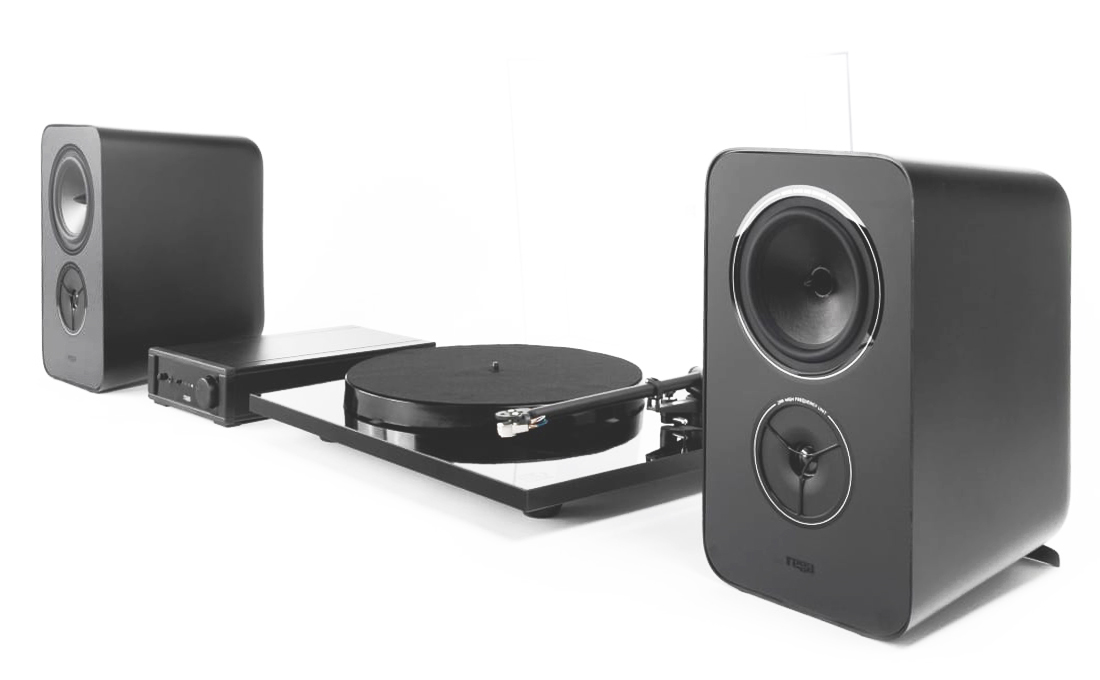
The Rega System One includes the Planar One turntable, the io amplifier, and a pair of Kyte speakers.
Summary
- Rega has been making reference turntables from $575 to $5,695 since 1973.
- Its entire line of turntables, speakers, amplifiers, and source components are
hand-assembled in its 38,000-square-foot U.K. factory. - Thanks to the current vinyl boom, the brand is experienc- ing a new wave of younger buyers.
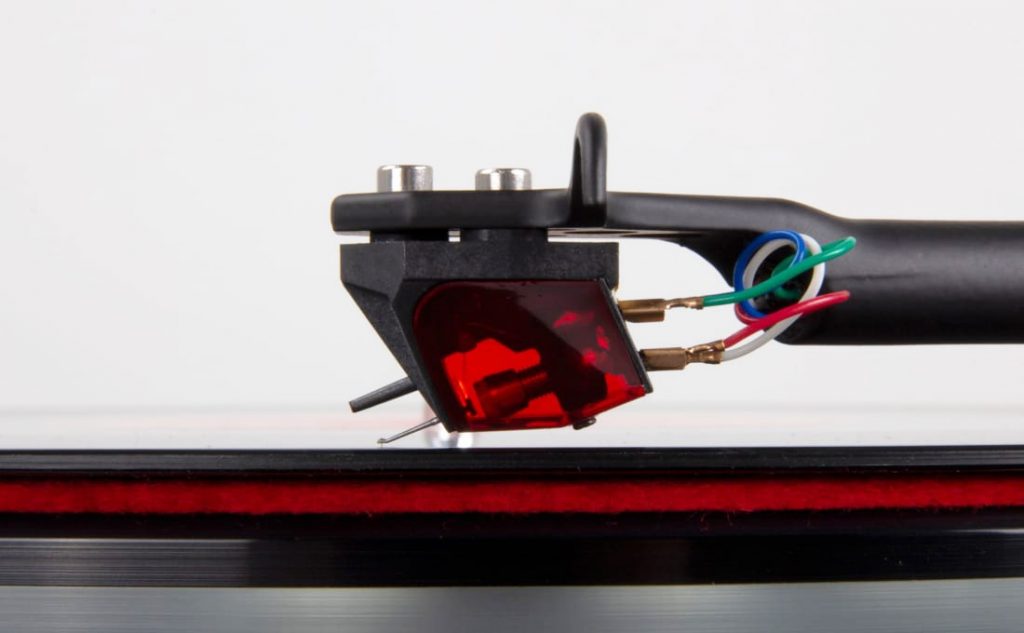
Rega and I
My relationship with these storied British turntables is almost 40 years old, too.
Continue to read

Five Twitter Updates You Need to Know
The social media platform adds elements of exclusivity,
and opportunities to monetize content.
Twitter has been notoriously slow at implementing changes to its platform, with one of its biggest developments of recent years being the shift from stars (favorites) to hearts (likes). But the past year has significantly changed how the entire population uses social media, and the need for our favorite platforms to keep up has never been more apparent.
In an interview with The Verge from March 2021, Kayvon Beykpour, Twitter’s head of consumer product, recently said that the social media giant is “reinventing itself,” and the slew of changes coming to the platform prove that this is not an overstatement. Here are a few important updates that will help you cut to the chase.
Super Followers
Social media has given us a deeper look into the lives of celebrities and influencers, and for the most part, it has been completely free of charge. But certain apps are proving that there is also money to be made by reserving some content for exclusive (i.e., paying) members. Twitter’s Super Followers feature hasn’t been given the green light quite yet, but a mockup from its site shows that influencers will be able to charge their audience for bonus tweets, community group access, newsletter subscriptions, and even a special badge for their profile.
Communities
During its Analyst Day presentation, Twitter announced a new feature to enable like-minded individuals to more easily connect. Just like Facebook Groups, which have been wildly successful, Twitter Communities will focus on a particular topic, and users can post tweets privately within these subsets. A mockup of the new feature shows a blank tweet where users can choose to share their tweet with everyone who follows them, or solely within their chosen Communities.
Spaces
It was only a matter of time until Clubhouse started to entice some competition. Twitter’s take on the conversation-starter is called Spaces and shares many of the same features as the pioneer. The creator of a Space is the Host, and can invite up to 10 others to join the conversation by sending them an invitation. Unlike Clubhouse, though, Twitter Spaces are public, and anyone can join in as a listener. The new feature is also available to iOS and Android users alike.
Revue
In a company blog post from January, Twitter says it is making its platform “a better home for writers” with its acquisition of newsletter provider Revue. The service is available to anyone who wants to publish editorial newsletters and make money in the process. Email contacts can be imported through CSVs, MailChimp, or added manually, and writers can design the newsletter however they’d like. Although the service is free, Twitter will collect five percent of the revenue generated from paid subscriptions.
Goodbye, Periscope
Twitter decided to sunset its Periscope iOS and Android apps as of March 31, citing “declining usage.” Twitter admitted in a blog post that the cut would have been made sooner had it not been for the events of 2020. For standard users, live broadcasts will now be done through Twitter Live. For brands, publishers, and creators, Media Studio will be the place to go.
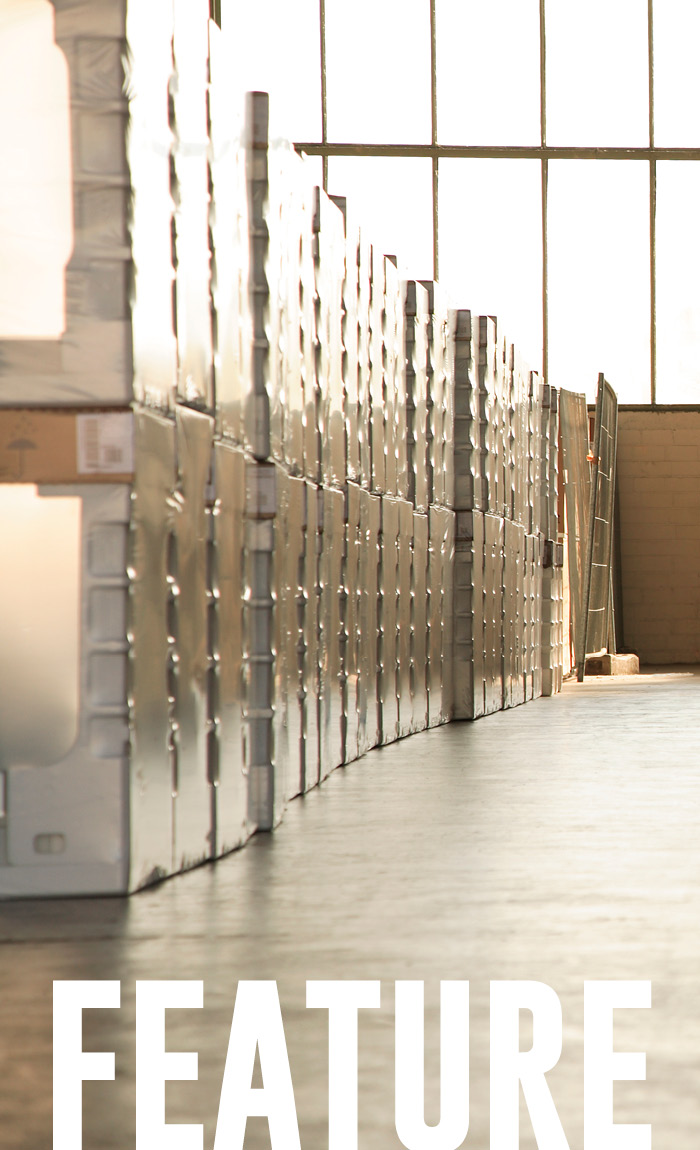
DISTRIBUTOR ROUNDUP
Distribution Dynamics
Executives from the major CE and appliance distributors tell how COVID-19 has brought their dealer service strategies into even sharper focus to address new and more pressing needs in 2021
COMPILED BY NANCY KLOSEK

What will be the most salient features of your product and program presentations moving through the balance of 2021 and into 2022 that offer your retailers benefits beyond customary buying opportunities (i.e., educational initiatives, training events, seminars on business best practices, etc.)?


21st CENTURY DISTRIBUTING | Tyler Nelson, Director, Marketing/Training
21st Century Distributing has taken pride in offering not only the best in customer service and product offerings but also additional educational opportunities to help our dealers achieve their absolute best. In addition to our multiple monthly trainings from manufacturers and business professionals, we are hosting our annual dealer roadshow. This will be the second year of our fully virtual event and provides opportunities for educational sessions with our manufacturing partners on products and solutions selling techniques. Additionally, dealers have an opportunity to earn rewards, win prizes and take advantage of special promotions only available during the show.


Almo Corp. | Jack Halperin, Senior VP, Dealer Channel Division
Dealer needs vary. Some prefer attending in-person physical meetings and events while others, with staff limitations or for other reasons, have grown accustomed to virtual interaction.
Since COVID-19 has become a major catalyst for the evolving online consumer decision-making and buying process, we continue to work with dealers on the development, enhancement and expansion of their online offerings. Successful independent dealers can no longer ignore this trend in the home appliance segment.


Catalyst AV | Helge Fischer, Executive Director
Business has been very healthy; the biggest issue is getting merchandise such as AV receivers. We are trying to provide great training and updates for the dealers. Most dealers are sick of Zoom meetings, so that part is hard. Catalyst AV distributors go the extra mile; it still is all about education, customer service, and training.


Climatic Home Products | Doug Allen, President
COVID has created many challenges over the last year within the appliance industry. At Climatic Home Products, we have been able to pivot to meet many of our customers’ needs. We have been able to get many customers to join in Microsoft Teams or Zoom calls to participate in new product launches and trainings. In recent weeks, we were able to get our customers together on a Zoom call in small groups to participate in vendor booth presentations at the virtual group shows.
For the remainder of 2021 and into 2022, we are planning to start in-person meetings for training and customer sales calls. We will continue to use Zoom meetings for launching new products and programs as well as quarterly business reviews..


D&H Distributing | Fred Eddy, VP of US Retail & NSP Sales
D&H has added a new vendor onboarding specialist program, as both partners and vendors demand more robust work/learn/play-from-home technologies. To bring new products to market faster in the U.S., we recently trained our sales force on more than 20 new technologies. This included medical monitoring and purification/sanitation devices, home entertainment products like PC gaming and projectors, plus tablets, cameras, and accessories for school from home.
This has resulted in triple-digit growth in emerging tech in six months. Also new for 2021: D&H’s enablement services and retail marketing resources allow consumer electronics manufacturers to accelerate their investment and return with key etailers. In addition, our National Solution Providers Group will continue to host virtual, field-based product training in high-demand categories relative to COVID-19 recovery, including consumer and commercial-grade PC devices, upgraded consumer networking solutions, home and outdoor products, plus entertainment merchandise like PC and console gaming.


DAS Companies, Inc. | Rex Berfield, National Sales Manager
As everyone knows, inventory is the name of the game in 2021. New requests from distant territories are much more common. Distributors face challenging issues — either take care of existing customers or forge new relationships. We have continued our stance. We keep it simple. We prioritize our retail partners ahead of all others, making sure they understand we are here to support them through good times and bad.
As we all adjust in these COVID-19 times, we have adjusted our attention towards marketing opportunities for the dealers. Yes, we are still advertising, but we are focusing the communication on letting the dealers know what is available, what alternative options exist, and all new opportunities.
The word remote has taken on a life of its own over the past 12 months, and will continue to impact how customer service is provided through 2021. Multiple locations and outside sales teams will continue to offer advantages that will expand in 2021, providing our dealers better, quicker information and quicker deliveries.


Exertis | Kevin Kelly, President & CEO
Exertis has more than doubled its outreach initiatives to retailers, supporting their retail and business divisions across all vertical markets by deploying the industry’s most robust virtual event and training platform that allows us to offer more customized product introductions, webinars, training sessions and, yes, buying opportunities. By taking our Big Book of AV Tour to this platform we are able to host more tour stops in more locations than ever before. We’ve removed all of the obstacles inherent with physical events and replaced them with a robust schedule of virtual programs that, we believe, will enable our customers to offer customized solutions across all verticals.


The Fesco Group | Raymond Levy, COO
As the world experiences major changes, inevitably, there are going to be some adjustments to the way people work and the way people purchase their products. 2020 was a year filled with extreme situations. The pandemic did a lot to change people’s work and purchasing habits. Some of those changes, such as work from home, web meetings, and purchasing online, will be permanent. Nevertheless, I believe that ultimately people will want again to work from an office, purchase from a store, and meet clients in person. Many of us were denied these privileges that maybe we didn’t appreciate, and not having them only caused us to yearn for that which we lost. As much destruction and loss of life as COVID caused, the one takeaway was that we all gained a new appreciation for that which we took for granted.
As businesses, we need to keep all of this in mind and prepare accordingly. As a company, we’ve adjusted in 2020 and offered our customers a much broader range of products to meet their ever-changing needs. We now offer remote office solutions, personal sanitization devices, and a wider variety of grooming products. We’re continuously adjusting and anticipating. Never a dull moment!


Ingram Micro | Alexandra Harding, Director, Vendor Management, Business and Consumer Solutions
We are planning a national BCS Connections live show in Puerto Rico in 2022. For this year, beginning in May, we will host a virtual event roadshow that starts on May 18 that will focus on real-life solutions following the “Work Better, Play Better, Live Better” theme. A six-city virtual show tour will begin in San Diego, followed by Scottsdale, San Antonio, Buffalo, Greenville, and wrapping up in Miami. Each show will focus on the themed solutions, beginning with the theme “Work From Anywhere, Learn From Anywhere.” We will showcase some cool videos showing those solutions in action and go into more detail about those solutions. We will also focus on wearables for digital health. Part of each tour will include main stages for vendors and virtual evening social events, and select vendors will have 1:1 meetings with attendees. Prizes will be given away at each location.
Our virtual Ingram Micro ONE experience is scheduled for this fall. It’s a big annual event where top vendors come to engage with various customers, including members of our Trust X Alliance and SMB Alliance solution-provider communities. Various tracks of our Business and Consumer Solutions program are also continuing in this virtual world until Q4, and we’ll continue to partner with key vendors to offer trainings.


New Age Electronics | Fred Towns, President
New Age will continue to provide training on our product portfolio and host events to further engage with vendors throughout the year. We will provide line reviews along with the vendors to bring exposure to new product direction and trends. We also have a collaborative forecast model that we can work on with our customers to provide the best inventory support. In addition to our training, New Age provides bundled solution options to retailers so they can bring a complete solution to their end users, versus just selling a product.


Next Level Distribution | Jonathan Elster, CEO
Over the last year, with trade shows and conferences having been cancelled, we were not able to get in front of our customers — so we’ve had to pivot. We’ve done this through digital platforms; that’s been a major focus for us. We offer virtual seminars on our website which have been very successful. We’ve launched new products and training videos that way; several vendors have provided unboxing and training videos.
Unboxing videos are something we’ve never done in the past. They started in the traditional ecommerce world, where people liked to see products being unboxed. They’re no different from our customers. If LG, for example, releases a new OLED TV, we have one of our employees do an unboxing, we turn on the TV, and viewers can see the product live. Traditionally, we’d have gone to customers to show them, but since we’re not doing as much of that because of COVID, we had to come up with digital ways to conduct business in a virtual manner. And the feedback has been great – incredible, quite honestly.
We’ve done a virtual seminar on how to get our customers more involved in social media, with a social media expert explaining how to get in front of their customers and use it to market to them with Facebook, Twitter and Instagram.
We also just launched SMS marketing, so now we’re texting our customers, and we’re continuing to do eblasts and shipping stuffers. We’ve just opened our new Atlanta facility, and our biggest concern was making sure our customers knew that we moved. Of course, we sent emails and letters and put it on invoices – but people always have their phones on, so why not text them? It’s a great way to remind customers of a new product launch or vendor as well.


PowerHouse Alliance | Dennis Holzer, Executive Director
As we move through the next year, the PowerHouse Alliance members look forward to implementing new events and initiatives for our dealers as we begin to transition to life post-pandemic. Most importantly, we look forward to opportunities to connect face-to-face. The pandemic certainly slowed down the introduction of new products and we expect that new SKUs will be entering the market at a rapid pace this year. Those new SKUs, coupled with some of the new products, new dealer relationships, and vendors we have slated for 2021, means dealers can also expect a hearty lineup of product and best practice training. Additionally, capitalizing on what was a very strong year for PowerHouse Alliance members, we will see several new locations across the United States, and several locations will move to larger facilities in the same areas, giving dealers convenient access to additional product lines needed to complete projects successfully. The overall availability and delivery of products to dealers will be more efficient throughout the next year.




Can you review how you have adjusted or tailored your activities to help the retailers you serve this year, in light of the challenges posed by COVID-19 over the past 12 months?
PowerHouse Alliance | Dennis Holzer, Executive Director
I’m proud of the way that PowerHouse Alliance members have served their dealers over the last 12 months. Dealers across the country saw an enhanced demand from homeowner clients for new technology and PowerHouse members were prepared not only with the product that was needed but with safety protocols at the forefront. Members implemented changes to daily operations including social distancing guidelines for dealers and employees. Restricted will-call and drive-through pickup allowed for dealers to get products they needed quickly while following social distancing guidelines. Warehouse locations also implemented strict cleaning procedures including freight disinfectant for inbound and outbound orders.
New Age Electronics | Fred Towns, President
Despite the challenges of this past year, our focus continues to be keeping customers up to speed on the trends and direction of technology. Like many organizations, we have shifted our communications to virtual platforms, connecting regularly with customers through virtual meetings and events. To keep events and interactions with partners engaging, we have incorporated activities like a cooking class led by top chefs, providing a great opportunity to have fun and network. We have also worked with industry leaders like the CTA to provide content on industry trends through short, digestible videos.
Next Level Distribution | Jonathan Elster, CEO
We’ve been getting product to our customers even faster than ever. Regarding 24-hour delivery, we partner with mobile courier services to get product to customers within 50 miles the same day. More and more of our customers rely very heavily on distribution; 95 percent of our territory that we sell into gets product same or next day. Things like that are critically important – to make sure that our customers are getting what they need as fast as possible.
We’ve done so much to help our retailers. When COVID hit, we had to go beyond the norm for customers who were challenged and needed help, as far as things like extending credit and extending payment terms, and providing extra resources for them to help them stay in business. We’ve also provided curbside pickup. These were things we did to make sure our customers were able to get product just in time.
D&H Distributing | Fred Eddy, VP of US Retail & NSP Sales
Distribution hinges on logistics. D&H’s distribution centers remained open throughout COVID-19, and our transportation team responded amazingly quickly to challenges like matching inconsistent supply with the incredible demand seen from retailers for their BOPIS (Buy Online Pick Up In Store) and ecommerce initiatives. The flexibility of our freight and warehousing management was impressive, delivering better partner experiences as we navigated these unchartered waters, particularly through the 2020 holiday season. We helped retailers pivot to a stock, dropship, or curbside pickup selling model as needed. One of the most significant adjustments was securing inventory when production was constrained and addressing shipping delays caused by global port congestion. Our broad category knowledge and best-in-class services allowed us to help retailers provide the categories that were most urgently required during the pandemic. Our customer engagement activities, including cycle planning, forecasting, and execution, all successfully pivoted to virtual sales environments in 2020.
Climatic Home Products | Doug Allen, President
During the last 12 months, one thing became very clear, when unprecedented demand started in our industry, as well as the shutdown of North American factories. It put many customers [in the mode of] looking for new partners to help meet their sales demand. We at Climatic Home Products had been working on new partnerships prior to COVID that enabled us to receive products to help supply many of our customers’ needs. We were also able to get ahead of forecasting on key products and were able to get a consistent product flow until late Q4 2020. Late-2020 container shortage plus high demand created a slowdown of receiving imported products. At that time, we were able to shift some key production back to North American factories to continue to flow key models.
Exertis | Kevin Kelly, President & CEO
In addition to the launch of our virtual event program, we have taken aggressive steps to realign our product strategy to offer solutions that are in demand in today’s post-COVID environment. [These include] audio and video collaboration solutions, displays, cameras, speakers, microphones — literally anything that enhances the work and learn-from-home world that we live in today. We’ve also expanded, significantly, the support programs we offer our customers. We created the Exertis XtraCare Program to provide employees with much-needed extra protection, and our partners with business relief and facilitation tools, as well as Personal Protective Equipment (PPE) kits to enable them to complete projects in a safe and secure way. We also created the PROAVXchange online auction hub where resellers can turn slow-moving product into cash that is needed to operate their business. The PROAVXchange provides resellers with an opportunity to sell product for a price that is most likely greater than what a bank would offer. We’re also working with all credit-worthy customers to roll out FleXFinancing that extends existing and future invoices payment terms by 30 days. Exertis also rolled out a new AV as a Service (AVaaS) plan that provides end users with a monthly payment option that enables them to upgrade to the most up-to-date technology in the future. Partners will get paid in full up front. Everyone at Exertis can take great pride in all that we have achieved during the last very challenging year.
21st Century Distributing | Tyler Nelson, Director, Marketing/Training
21st Century Distributing took a proactive and educational approach to the challenges posed by COVID-19 over the past 12 months. We provided our dealers with direction and resources with PPP loans and Employee Retention programs. We secured 24-hour non-contact and curbside pickup at our locations. We upgraded our servers and online POS systems to handle the uptick in online ordering and processing. Finally, we implemented a robust cleaning and hygiene program at all our facilities to align with the WHO and CDC guidelines to help stop the spread of COVID-19.
Almo Corp. | Jack Halperin, Senior VP, Dealer Channel Division
Our priority has always been on keeping everyone safe and healthy, while still moving business forward. At Almo, we quickly acquired tools to allow our employees to effectively engage remotely with dealers. We also stocked as much core appliance inventory as possible early last year, which has allowed dealers to continue moving product, especially as the appliance demands increased.
Ingram Micro | Alexandra Harding, Director, Vendor Management, Business and Consumer Solutions
It is all about virtual. We use Microsoft Teams and encourage every associate to have video calls with their customers and tell them to turn the camera on – it’s OK if they see your living room, or if the dog barks in the background or if the kid comes up and asks a question; it’s OK to be human, with life going on around you.
Consistency is key, and we’re constantly driving that message to be face to face and not just hide behind email or phone calls only. It’s important to keep that customer connection. We also looked into customer needs and are looking at credit facilities and at payment terms to adjust where needed.
We did a lot of different things to make sure our customers have what they need to be successful. We also made the trainings fun by adding personal touches – what we call door drops – that is, sending DIY kits to learn how to cook or bake or make charcuterie boards – and we even send whiskey boxes.
Catalyst AV | Helge Fischer, Executive Director
So yes, the protocols have changed. The most important thing is that the dealers need to feel safe when they pick up products, so there is a lot less personal contact, and more pickup after hours and ordering remotely. We have secured the areas of pickup, increased sanitizing, and [implemented] social distancing, etc., to make sure our customers feel good about being at their distributor.




What do you think constitutes the ‘new normal’ in the distribution business, for the post-COVID recovery period – what do you expect to return to the way it was before, and what do you think has changed irrevocably?
New Age Electronics | Fred Towns, President
I feel we have a new business climate that moves faster with digital information and content and communication. Meetings can share information and open discussions and not have to wait for a face-to-face visit – SPEED is key!
I am not sure if the world will ever return to the traditional ways that we had in 2020 — it will be a hybrid model with new SLAs and fresh, new ideas. I think the role of distribution will be more important than ever to support our retailers with the right inventory and fulfillment of goods faster to their customers. I also feel in-person meetings will be better planned with more focus for the vendors and customers because we can have planning discussions and provide content digitally before we sit down in person to meet. We have entered into a hybrid world, where people can choose in-person or virtual, depending on what avenue best suits their needs. Like we experienced in 2020, there is something for everyone, and NAE will provide the solutions in all formats so that our customers will continue to enjoy growth in their business.
Next Level Distribution | Jonathan Elster, CEO
I hear people talk about the new normal. I do think the digital approaches we’re taking will continue. We’ve seen a lot of value in it and so have my customers. [Even in non-COVID times] not every customer is able to travel to a trade show because of cost or because they are owner-operated. However, I do envision getting back in front of customers and getting back to trade shows, and getting in front of our suppliers. I don’t think this is the new normal – that we’re going to sit inside and just work from our workplaces. But as for the digital aspect of doing business, that will continue 100 percent. It’s really provided another avenue for us to get product in front of our customers even quicker than we have in the past. It’s been very successful, we’ve enhanced our website to be best in class, and we’ve made a lot of changes to search capabilities, online promos, invoice tracking and bill paying, that have been very valuable to our dealers.
PowerHouse Alliance | Dennis Holzer, Executive Director
I expect the distribution business to return to business as normal prior to the pandemic in the post-COVID recovery period, but we have certainly learned some important lessons as a result of COVID-19. Through the pandemic, communication was key to keeping dealers and distributors successful. PowerHouse Alliance distributor members have adopted new options to get products to dealers including same-day delivery, more member trucks on the roads, additional locations, and stocking warehouses with larger quantities of product. Through the remainder of 2021, we will continue to reap the benefits of enhanced communication as we introduce new locations, vendors, and products and return to a consistent in-person training schedule that offers more, including some additional surprises to be unveiled.
The Fesco Group | Raymond Levy, COO
We all experienced the attenuation of the distribution business as brands went direct to retail and bypassed the distributor in the middle. More retailers have closed, and we find ourselves in a new world with more and more brands chasing less and less retailers. Retailers are continuously trying to simplify their supply chain by shrinking their vendor base. As a result, opportunities have opened up for distributors who have vendor numbers and can supply a multitude of solutions.
Catalyst AV | Helge Fischer, Executive Director
Things will normalize, as restaurants, movie theaters and more open up, and people ‘feel’ like things are getting normal, and they are being vaccinated… There will be less fear — that is key to actually having meetings and demonstrations with dealers. I believe we will have mask mandates at trainings and still use video conferencing more than in the past, so networking products will continue to have strong growth. The world is maybe going back to the office, but a lot of companies will still prefer their employees to have a mix of office and at-home work. Again, there are many great opportunities for our Catalyst AV members and dealers.
21st CENTURY DISTRIBUTING | Tyler Nelson, Director, Marketing/Training
We at 21st Century Distributing believe that change is inevitable and are always looking to improve our dealer experience day to day. Will we see the same kind of face-to-face interaction that was considered the “normal” prior to COVID? No. However, that was changing regardless, with dealers utilizing incredible technological tools to showcase pre-project designs and proposals online without needing to be in front of the client. This change was also coming on the distribution side, and a need for dealers to have access to their products quickly. We implemented a 24-hour pickup program at our locations specifically to address this need so an integrator could place an order anytime and know it would be waiting for them that night or early the next morning. Change happens sometimes slowly and sometimes in the blink of an eye. It’s how you adapt and adjust your business models to meet this change, and then anticipate the next one that will determine your level of success. 21st is looking forward to the future.
Climatic Home Products | Doug Allen, President
As we move to the next chapter of the pandemic, there will be a “new normal” in distribution. This new normal will allow distributors to use technology and speed to market that will help better communications to our customers and delivery of new products. I believe that customers who were able to find distributors that could support some of their needs over the last 12 months will continue to support some percentage of their business moving forward because of the lessons learned during the pandemic.
Just as retailers found out that less suppliers are probably not the way of the future, distributors also found that a mix of suppliers from around the globe is important to the future of their businesses.
Almo Corp. | Jack Halperin, Senior VP, Dealer Channel Division
We anticipate overall manufacturer inventory levels will continue to improve as the year goes on. Manufacturers will be looking to make up lost share from the previous 12 months — this year’s holiday appliance offerings should be more in line with the traditional promotional period.
We also expect the buying groups to some extent will be able to conduct physical Buy Fairs. While the virtual experience has become a necessary and relevant way to conduct business, it’s still important to meet with dealers and vendors in person at such events when safely possible.
Over the past 12 months, we have learned that conducting business remotely is effective. Once our offices fully reopen, we’ll be able to provide a hybrid balance that is effective and productive for both employees and dealers.
D&H Distributing | Fred Eddy, VP of US Retail & NSP Sales
The new normal — whatever that looks like — will require versatility and fortitude. D&H has a depth and breadth of consumer and commercial solutions, and has proven its ability to provide high service levels regardless of how or what the world wants to buy. That agility applies across retail, ecommerce, and B2B disciplines. Even if business travel remains limited, D&H’s tenured field sales team will serve as a vital resource for manufacturer and retail partners. We’re positioned to fulfill day-to-day business needs in the short and long term, both virtually and in person. No one can fully predict the permanence of recent developments, but based on D&H’s 104-year history and current growth trajectory, we’ll be here, ready to support the channel’s evolution for many post-pandemic years to come.
Ingram Micro | Alexandra Harding, Director, Vendor Management, Business and Consumer Solutions
I do not think we will ever go back to the way it was. We are going to continue to see growth in ecommerce sales. I am happy to see some of these retail stores succeed in changing their model to curbside pickup and same-day delivery options. I think when we see each state start to reopen, you are going to see more of a rush, because people are so tired of being cooped up. You are going to see [unleashed] that pent-up demand just to get out. Ecommerce is still going to drive it; there is still going to be pressure on the carriers and that whole network. The delays will continue with delivery, but patience has changed things, and lowered the expectation of 24-to-48-hour delivery – and consumers understand this.
How will businesses open? When offices open back up, they will not open 100 percent – maybe only 50 percent. Will they offer hybrid work solutions that will continue to drive those work-from-home solutions? People rushed and went out and bought whatever it was that they could to make work from home do-able. Fast forward one year, and people are going to refresh these things because they will continue to work from home, and they will want to have a better camera, better monitor docking stations, and better networks. Once they realized they had their entire family working online, they realized that that four-year-old router needed to be thrown in the trash and upgraded, so that they could get on board with the latest Wi-Fi solutions that are available now, with mesh networking protection. So these are areas of business that are going to continue to see growth.
I think travel will resume being the way it was before because, again, people want to get out. But things will be slightly different – like that dining experience using QR codes to scan the menu, for example, will continue. These solutions save some trees. Touchless displays are out there a lot more. Not touching things as much, but where self-checkout options or mobile pay options are available, are trends, and because of these trends, things will change for the better for the environment.
My takeaway from this is that I hope people can be more kind and more compassionate. Many lives were lost during this pandemic; we shouldn’t lose sight of that. People are going to be more health-conscious, and more aware of their surroundings.
Exertis | Kevin Kelly, President & CEO
COVID has demonstrated that manufacturers and resellers alike have to work with a distribution partner that is capable to provide the resources and solutions needed to meet a challenge that is unthinkable in scale and scope. That’s exactly what COVID was — and is: A challenge that shook the business to the core. We demonstrated the true value of a distribution partner during the last year. In good times, everyone can use the word ‘partner’ when it comes to distribution. It’s easy to be a partner when times are good. When times are bad, really bad, manufacturers and retailers need a distribution partner that can stand with them and help them through a crisis in every way they need, including business support, expanded credit, flexible terms, and staged delivery of solutions. We did all of this — and more. Frankly, retailers need a distribution partner who, in every sense, is their business partner. I believe for all of these reasons the era of small distributors is coming to an end. Consolidation, already under way, will accelerate.
SUMMARY
- An especially challenging issue for dealers early on was securing adequate inventory to meet exceedingly high demand for certain categories such as networking products, replacement appliances and large-screen TVs – but distributor tools that aided dealers in accurate forecasting and product cycle planning proved to be invaluable resources.
- Distributors have acted adroitly through the yearlong pandemic, swiftly tailoring programs to get dealers up to speed in digital, and in streamlining their just-in-time delivery processes.
- Having successfully adjusted to the “new normal,” distributors say they foresee business eventually settling down in the post-COVID period to a combination hybrid digital and in-person model – and add that they now have the resources in place to manage all aspects of it, moving forward.


RETAIL ON THE RUN
A Store Visit with Joseph Akhtarzad, Owner, Video & Audio Center
INTERVIEW BY TOM SAMILJAN
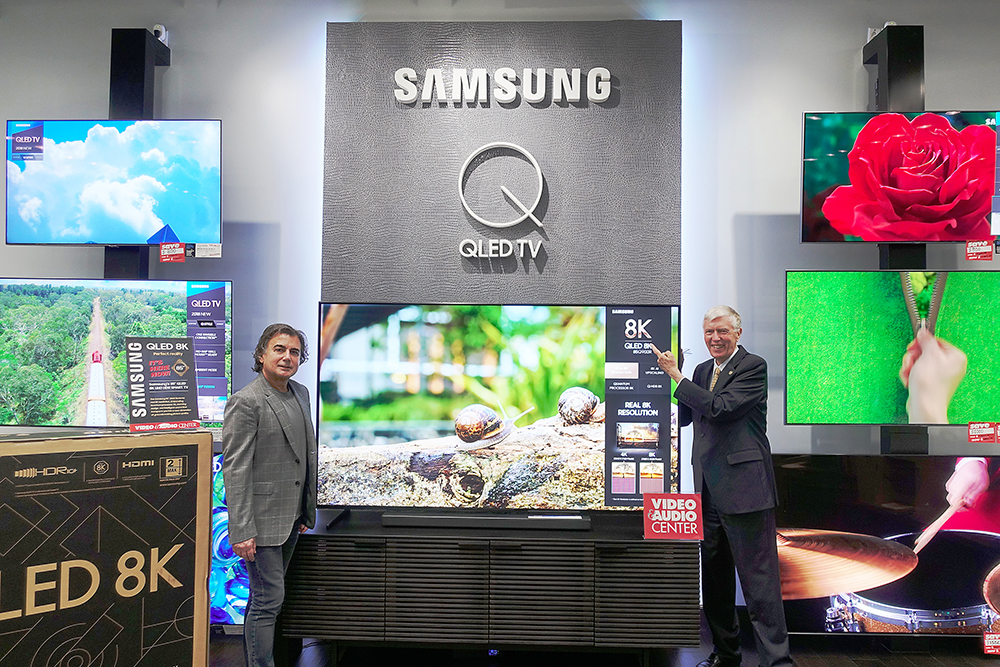

What’s the history of Video & Audio Center?
This is our 40th anniversary year — we’ve been around since 1981, which is also the year I came to the U.S. to join my brother, Mayer, who already had a store selling video games and renting out movies. Based on what my customers were asking me about, I realized shortly after joining him that there was more demand for electronics and gadgets. So the very next January, in 1982, we went to our first CES show and realized, my goodness, there are so many gadgets and so many brands — Sony, Fisher, Sanyo, Casio, and Goldstar (LG) — so we signed up for a dealership and shortly after that we became an electronics business.
Back then, there were 800 electronics retailers in L.A. alone, throughout the 1980s. So we had a lot of competitors. Right off the bat, my aim was always to carry the best and to sell solutions rather than try to compete on pricing. Then, about 23 years ago, I saw that electronics were getting more complicated and control systems were growing, so right across the street from the original Video & Audio Center store in Santa Monica, I opened up a 5,000-square-foot showroom specifically aimed at customers who were interested in custom installation. It had a home theater, master bedroom, living room — whatever is in the home, we had built out in the showroom. Over time, we realized that our customers were increasingly aware of custom installation options and did not need to be convinced with a showroom — much better to go right to their home, office, or other job site to assess and then tell them what they need. So about 10 years ago, we closed the showroom location.
A couple of years after that, we noticed that many of our competitors didn’t exist anymore, so we started to open up new locations throughout the Los Angeles area for the first time.
How many stores do you have now?
Right now, we have five locations — superstores in Santa Monica, Lawndale, and Agoura Hills — and smaller showcase boutiques like this one in Century City and Agoura Hills. The store at Westfield Century City, where we are now, is in a prime location near the escalator as people are coming out of the parking garage. In normal times, this mall gets more than 2 million visitors per month, and this area is full of offices — more than 400,000 people work within two blocks of this store. They need gadgets and electronics, and even though many malls haven’t been doing well, this one has flourished because so many people come here to eat. Even over the last 12 months, this has been a well-visited shopping mall because it’s outside and has just undergone a $1 billion renovation. Locations like this one are important for manufacturers, too, because big regional stores that are a destination don’t really exist anymore, so having a showcase like our Century City location for products is a good place for consumers to see what they cannot see online.
In what ways is Video & Audio Center different from the competition?
My aim over the past 40 years has been to concentrate on any level of consumer, whether that consumer wants a $199 50-inch TV or a $400,000 Samsung Wall TV, which we were among the first to install in the U.S. We’ve built many home theaters, which ranged in price from $100,000 to $2 million, as well as underwater audio systems in pools. We’ve built custom solutions for everyone from Elizabeth Taylor and other celebrities to movie studios.
Making things easy has also always been a part of our strategy, especially with custom installation. It’s where our “Just OneTouch” motto came from 23 years ago. We’re also always technology-forward, always staying on top of the cutting edge and carrying the latest products.
I have always led with the idea that price is no objection — I want to bring everything in that exists, as long as there is interest. We have sections in our stores for the latest high-tech products across categories — not just video and audio — from Nest cameras and Dyson vacuums to video game consoles and laptops. Our aim with this and other stores is to provide a place where the consumer comes in, then sees and touches products and gets the same excitement that I and so many other people get when walking the CES show floor. I don’t see online stores, Costco, or Best Buy as competition because they don’t really create that kind of in-store excitement or provide first-class service. For example, if you buy something from us, we’ll do a same-day setup for you. We also have a 24-hour, seven-days-a-week customer hotline in case anything goes wrong with your purchase or you have any questions on how it works.
What is Video & Audio Center’s online or e-commerce approach?
Obviously, online business is not something that’s going to go away, and as you can see, it’s a growing trend. When something like this happens, you have to embrace it. You have to follow the direction of consumer habits. We started our online operation about 10 years ago. We have a beautiful website, and whenever someone buys something online, we quickly send them a message and always follow through with an installation if they’re local. And if they’re not local, then we can reach out to any members of the HTSA, which is the 63-plus-member buying group to which we belong, to help with that installation or any other advice. We do a lot of advertising everywhere, including online, and we get a lot of customers coming in from that — I’d say about 25- to 35 percent of our business comes from online ads, and it’s often new customers who want to see things in person and make sure they work, and often need advice.
Did the pandemic change the way you do business in any way?
Our 24/7 hotline was launched during the pandemic — and as a direct result of it. We’d never had a hotline before, but we figured that customers did not want to come into the store, so we made sure that hotline was all over the media — print, TV, radio, and social media — and we closed many deals over the phone. We had so many people calling us about all kinds of products and realized that we have as many customers interested in 32-inch TVs as we do in million-dollar installations.
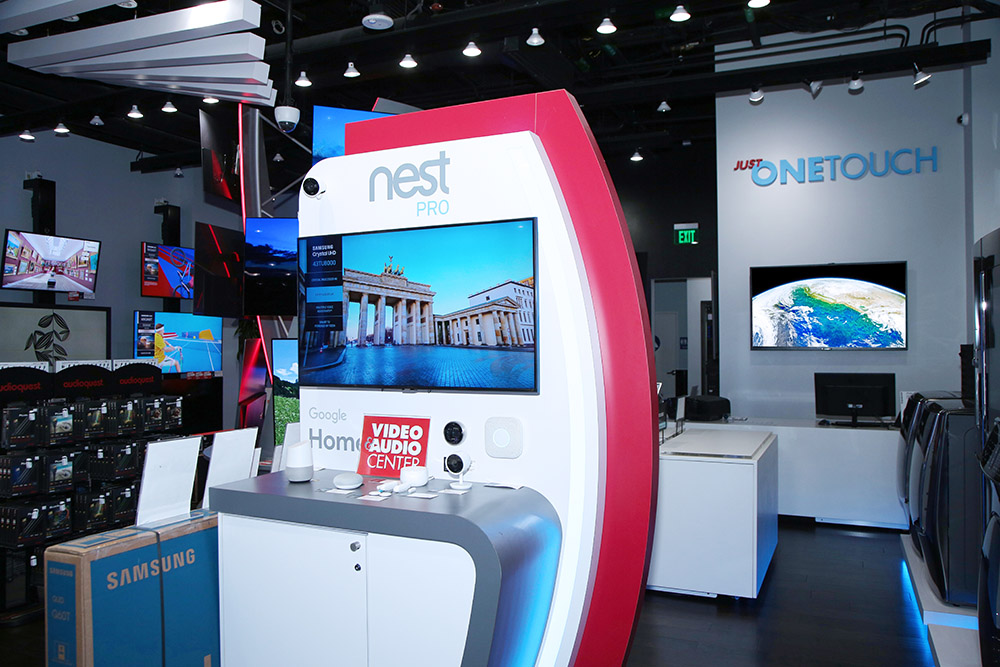

Name three things that the management team at Video & Audio Center has implemented that you attribute to the success of the store.
Number One is the weekly training we do for our salespeople. If our salespeople can’t demonstrate products, they should not be on the floor. Number Two is the design of the showrooms. Our stores are set up with a different “store within a store” section for each manufacturer. So when you walk into the store, you visit each brand’s area and see its products, as at a trade show. Number Three would be product selection; we always carry the latest meaningful product, which means it’s part of a growing category— not some hyped trend technology. We also only carry top-tier brands.
What are your goals this year?
Well, in addition to continuing to build on the Video & Audio Center brand, we are launching an additional new motto — ”Just One Whisper” — which complements “Just One Touch,” but also takes into account the enormous growth of voice-activated interfaces for controlling all the devices in the home, including custom installations. Also, with the pandemic subsiding and at least some people heading back to work, we want to get people back into stores to see, touch, and experience the products. Our approach is centered on what I call the three Ds: discovery, desire, and demand. That means getting all the great new products and brands out in front of customers through hyperlocal advertising and enticing in-store displays. My main goal this year is to get manufacturers and their new products right in front of consumers to create the desire and demand.
Do you have any plans to expand in other ways or sell other categories?
Yes, we’re expanding rapidly into the health and wellness category. Obviously, these smart watches and other devices are essential for, say, diabetics who need to know if their blood sugar is high, or anyone who wants to check their blood pressure throughout the day. We’ll be creating health and wellness categories and sections in our stores, and will put some marketing behind them. The advertising will be a little different, such as sending mailers directly to homes and working with doctors and hospitals to get awareness around this category and help it succeed.
Is there anything in the building of your business that did not go the way you expected, and that you learned from?
Well, the best thing I did was create the Just One Touch showroom 23 years ago, which was very successful for nearly a decade, but the worst thing was when I realized after 10 years that it wasn’t necessary anymore. People no longer needed to be convinced to move forward with custom installations; they were just calling and asking for me to come to their homes, spec it out, and come up with a solution. So I had to get rid of it. As a result of closing that location, I learned that business is always evolving and if you don’t evolve, you die. So that practice is now in place every day not only with myself, but also with my marketing people and my buyers: Always look ahead for newer and better technologies and bring those to the consumer in the ways that consumers want.
Where is your favorite section of the store?
I designed this big carousel in the back where every manufacturer — Sony, Samsung, LG — has their TV mounted side by side and people can see what different monitors look like from every angle. When you have a TV on the wall, you don’t see how thin it is. No one else has a beautiful showcase like this.
How does Dealerscope help you in your everyday business?
For years, I’ve made sure that all my employees subscribe, to the point where I used to ask them if they knew what was in Dealerscope in terms of what new TV or technology is coming. So it’s really for awareness — to make sure our people not only know what’s coming in the future, but also what other retailers are doing so we can adapt.
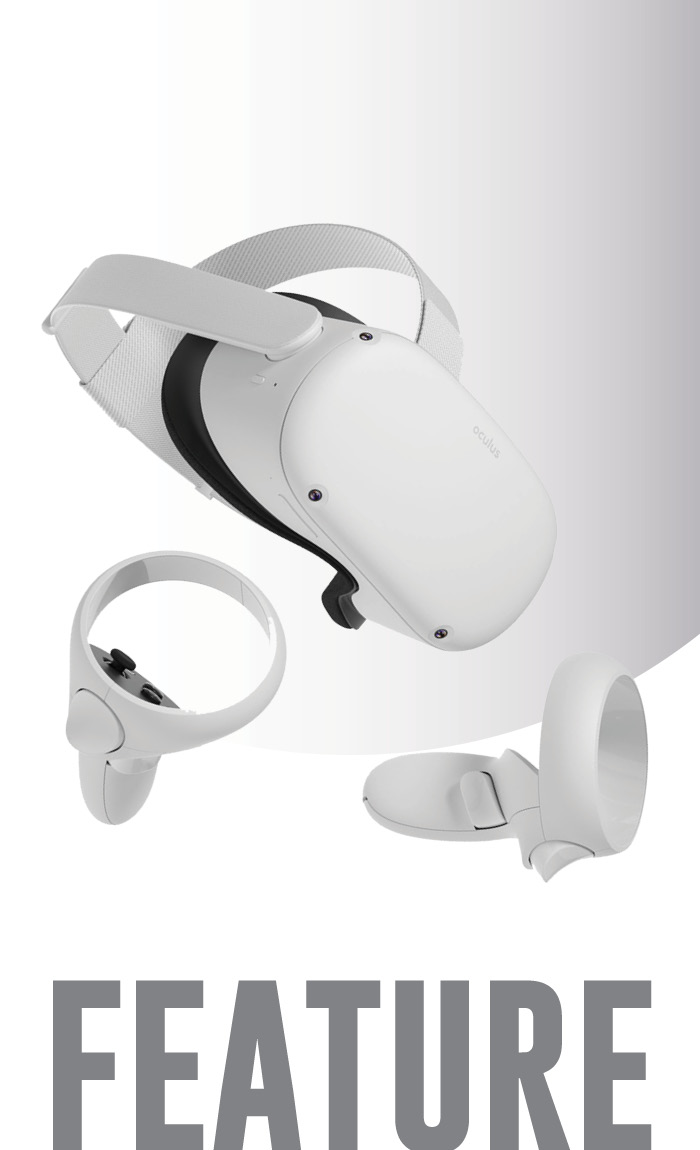

SPRING ACCESSORIES
Helping Consumers Upgrade and Migrate Their Technology from Home to the Office


BY FRED TOWNS
President, New Age Electronics
(Main image) From games and virtual worlds to movies and workouts, Oculus’ highest-resolution virtual reality is within reach with the Oculus Quest 2 VR system, which is powerful, portable, and affordable. The new Oculus Air Link offers a completely wireless way to play PC VR content on Quest 2 using WiFi.
As offices begin to reopen in some cities and portions of the country, consumers will continue seeking ways to upgrade their work-from-home environments while migrating some of their favorite productivity tools and technologies back to the office with them.
As these needs continue to increase, it’s critically important for retailers to provide consumers the latest technology for both home and work, especially as the line between the two becomes even more blurred. Consumers want to be connected 24/7 regardless of location, and there is enormous sales opportunity in meeting that demand.
Returning to the Office
As companies bring employees back to the office, workers return more technologically savvy, with ever greater expectations for comfort and productivity. They want the same products they have become accustomed to using at home. Just as workers upgraded their home office technology with the addition of multiple monitors, ergonomic keyboards, mice, and chairs, employers and retailers should prepare to provide some of the same advanced technologies and ergonomics their employees adopted at home.
Video calls will remain the norm going forward, and products such as high-resolution web cameras will be in demand. Ultra-light weight bone conduction headsets provide for comfortable all-day use while offering better situational awareness because you can hear what’s going on around you.
Hybrid work environments require technologies that make it easy and convenient for employees to transition as they divide their time between the office and working from home. Accessories employing USB-C simplify connecting monitors, phones, keyboards, notebooks, and cameras in various environments. Employees are seeking robust storage drives to easily access work when they are not connected to the company network, whether at home or on the go.
With the acceleration of 5G, manufacturers are integrating LTE into products so that employees can make calls directly from their notebooks and tablets.
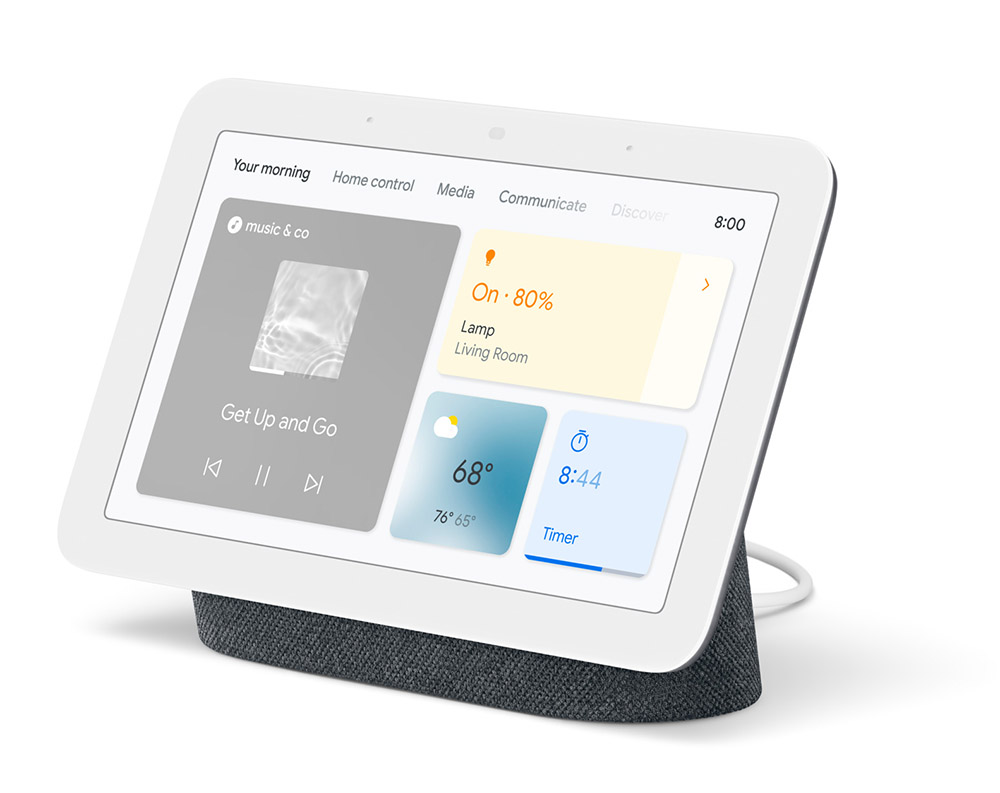

Besides letting you control any Google Assistant-compatible device via voice or touch, Google’s Nest Hub Gen 2 smart display streams shows, videos, and music.
Making Remote Work Work for You
As many businesses and schools shut down in-person environments last year, consumers cobbled together the available technology for remote work and learning. As the year went on, consumers began to identify the products that best meet their needs and started upgrading accessories that provided more efficient communication and comfort.
One year later, consumers looking to fine-tune their remote setup are seeking to upgrade accessories like keyboards, mice, and cameras that make it easier to work. Some are choosing to stick with a single brand so that their ecosystem of devices and accessories work seamlessly together.
With the prevalence of video calls, consumers are starting to look at cameras with a higher capacity (1080p or 4K) for more detail work, whiteboarding, or doing product demos. They want cameras with better microphones, image tracking, and other advanced features.
They are looking to the larger bandwidth of Wi-Fi 6 and mesh networks to ensure robust connectivity for work and for streaming entertainment.
In addition to upgrading for the latest features and functionality, the ability to work comfortably is becoming increasingly important, and consumers are swapping out their old equipment. Many workers seated for a large portion of the day are adopting ergonomic chairs, stands, and standing desks along with smart watches that remind them to get up and move.


Google Nest Hub Gen 2 allows you to control any Google Assistant-compatible device via voice or touch, and streams shows, videos, and music.
Staying Connected at Home
As consumers become more connected at home through remote work, learning and daily activities, they are looking for a hub device that acts as a command center for the home. People are recognizing the importance of having an all-in-one smart device with a screen and speakers to check the weather, view the front door, see what’s next on their schedule, and play music or news.
More in-person interactions are driving a rise in home medical devices such as contactless thermometers and oxygen level monitors to stay in tune with their personal health. Wireless home security cameras that can operate for up to two years on a battery charge provide inexpensive solutions that don’t require hardwiring to networks and power sources.
As consumers continue to be more connected than ever — whether at home, in the office, or on the go — it is important for retailers to understand the different consumer profiles and what products fit into each environment.
There is enormous opportunity to address these needs, especially with the rise of 5G and broadband for better connectivity. We have entered a hybrid world, where consumers can choose virtual or in-person, and retailers should be prepared with something to offer everyone.
WIRELESS
How the Wireless Industry Will Evolve in a Post-Pandemic 2021


BY CHAD JENSEN
Chad Jensen is the President of Round Room LLC,
which leads and invests in companies serving the wireless industry.
It’s no secret that COVID-19 has affected nearly every industry across the globe, including those in wireless and mobile technology. However, even with any hurdles or challenges that have arisen, industry professionals continue to innovate and enhance technology, which will continue for the rest of 2021.
Even with the pace of vaccinations rising by the day, much of the world continues to operate virtually in some capacity, and that will likely remain an integral part of how we connect and conduct business even after this pandemic subsides. This means much of the population will increasingly need cutting-edge connectivity and devices to work, learn and operate remotely in this new global climate.
Many different wireless trends and themes will take over throughout the rest of 2021, but three may be the most noticeable and most impactful: expanded 5G connectivity, smart office technology, and the continued rise of artificial intelligence. Below, we take an in-depth look at each of these trends and how they will impact our industry and world between now and the start of 2022.
Expanded 5G Connectivity
It’s finally here. 5G, or the fifth-generation wireless network, is set to make a major splash in the coming months and years, with many of our mobile carriers already developing and expanding their own 5G networks throughout 2020. Due to the virtual global environment in which we now reside, the addition of widespread 5G will bring many benefits to the mobile phones and various devices we rely so heavily upon.
5G networks will dramatically improve upon already existing 4G wireless networks, making it easier than ever for people to connect across their wireless devices. The speeds and bandwidth of 5G will affect consumers across the globe with the technology’s higher network reliability, improved data rates, and faster download speeds, which can be up to 100 times faster than 4G, depending on your location. Businesses will also utilize expanded 5G technology to improve their overall efficiency during the remote work era. For example, Verizon is using its 5G networks to introduce Verizon 5G Edge in the U.S., a service combined with Amazon Web Services that allows businesses to utilize cloud technology with the overwhelming benefits of 5G technology.
Consumers will also benefit from 5G enabling them to connect more of their devices with fewer latency issues. 5G’s low latency will decrease the lag between weblink uploads or lags in video conference calls, for example, getting consumers their answers and needs faster, and helping businesses avoid those awkward pauses in their next virtual staff meetings.
As many businesses continue to work remotely, students conduct e-learning, and people rely on their networks to connect with friends and family, the need for 5G is drastically higher now than when this technology was originally introduced. Carriers and mobile device manufacturers are racing to equip consumers with the latest network upgrade. In 2021, 60 percent of mobile phones sold in Western Europe and North America are expected to support 5G with the number to increase to about 85 percent in 2024.
Smart Office Capabilities
Nearly all businesses and industries across the globe have moved to a virtual setting in some form for the time being, with some using remote work indefinitely, as COVID-19 continues to surge across the nation.
Some businesses, however, will be looking to welcome their employees back to the office in some capacity in the coming months, now that the vaccine has become available to anyone over the age of 16 in the United States. Luckily, new technology can help business owners create “smart offices.” Businesses can maximize the efficiency of expanded 5G and the benefit of connecting more devices together by using Internet of Things (IoT) devices, which will run more effectively utilizing 5G and can make offices more connected and safe for employees in the COVID era and beyond.
We already use IoT devices — Fitbit watches, Alexa or Google Home devices, smart appliances — in our personal lives. The further development of 5G will allow office spaces to also benefit from smart devices. For example, fitness centers across the nation have been utilizing crowd trackers to keep guests safe and distant during the pandemic. A similar version can be used in an office setting to help employees maintain social distancing when they are on-site. We can even see businesses incorporate smart office capabilities with minimal in-office capacity by simply using smart lighting, power, and energy systems to save overall operating costs with fewer employees on-site. The continued advancement of our wireless networks and IoT devices will aid business owners immensely as they adapt to the new ways to operate their company.
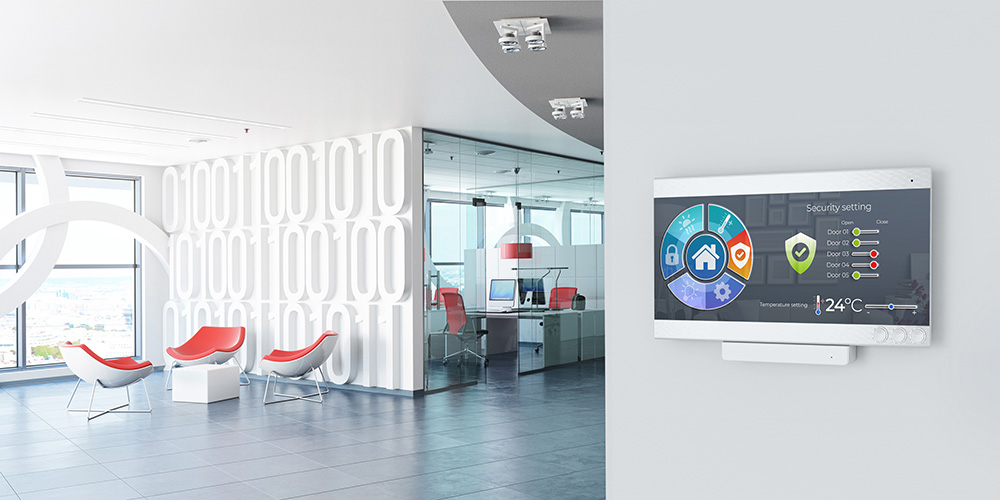

Renewed Dedication to Brick and Mortar
The hiatus of customers in stores since the beginning of the pandemic has had drastic effects on businesses that once relied on in-person transactions. Customers have turned to chatbots, mobile apps, and other digital features to answer their questions and fulfill their needs, but these interactions have lacked valuable person-to-person engagement with in-store representatives. As it grows safer to operate stores in a similar capacity to what we were used to, businesses will need to meet consumers where they’re at and adapt to new habits that revitalize their in-store customer experience strategies.
Adequate customer service is important for customers, whether they are engaging with businesses and brands remotely or in person. In recent research, 79 percent of consumers reported customer service is extremely important when deciding on where to shop and what stores to engage with. As customers begin to return to store locations this summer and beyond, businesses need to ensure their customer service, both in-store and online, is up to standard to meet customers’ needs and wants.
It’s likely that social distancing precautions and regulations will remain in place for some time, even as more people get vaccinated, but there are many ways to address this through technology. For example, in-store employees can refer customers to online resources or apps that answer their questions more efficiently while in-store. This can also decrease the amount of time consumers are in-store, which not only keeps consumers safe, but also means fewer in-store employees need to overload capacity rules. To continue to offer safe options to customers, stores can also utilize touchless options such as curbside services, touchless payments, buy online/pick up in-store, and more. Businesses that can adapt their customer engagement models to fit customers’ evolved needs since the pandemic began will thrive in our post-pandemic business world.
The ways people and businesses operate are drastically different than they were one year ago, and it’s likely that it will be even more different a year from now. The good news is that our technology will continue to adapt and enhance the way we navigate the coming changes this year and beyond.
KITCHEN APPLIANCES
What's Cookin'?
As consumers find their inner chefs and prepare more healthful meals, kitchen appliance sales will give you an edge.
BY STEPHANIE ADAMOW
A year ago, the worldwide population had to abruptly transform its normal daily activities to meet demands forced by lockdowns and social distancing measures. Naturally, being at home more than usual meant that we would prepare more meals, navigating between virtual meetings for parents and learning for children.
Evolution of the Home Cook
According to Darren Seifer, food and beverage industry analyst for the NPD Group, consumers at the start of the pandemic fed their emotions, reaching for not-so-healthful options, snacking more often and consuming more sugar and alcohol as the lockdowns continued. As the months progressed and any hope of returning to “normal” anytime soon diminished, the population had an awakening of sorts.
“They said to themselves, ‘I really can’t sustain this indulgence,’” Seifer explains. “And so we started to see consumers choosing better options. They were looking to indulge, but tried to do it more sensitively.” Foods such as nutrition bars or popcorn that were lower in fat or sugar suddenly became popular.
Grocery shopping habits changed a bit as well — also a result of consumers being at home more. Instead of the proverbial “What’s for dinner?” question, there was a shift in focus to preparing more breakfast meals because families were not rushing out of the house for work and school. Seifer says that not only did pancake mix and egg sales increase, but also, sales of appliances — everything from waffle and bread makers to and juice and smoothie blenders — rose.
Registered dietician Gillean Barkyoumb, MS, RDN, says there has been a surge in interest to prepare the trendy smoothie bowl, which she calls a “breakfast staple.” She would know, as she was recently named the first smoothie bowl sommelier from small appliance manufacturer Ninja. Barkyoumb’s mission is to make nutrition “simple and convenient,” especially for millennial women. She has more than 8,000 Instagram followers (@MillenialNutrition), where she shares tips and tricks to stay healthy, fit and energized. The Ninja Foodi Smoothie Bowl Maker and Nutrient Extractor allows consumers to “build confidence in the kitchen,” while following her simple and convenient mantra, Barkyoumb said. (See sidebar for more info on this product and more.)


Air fryers such as the Ninja Digital Air Fry Oven, above, are also “big winners,” according to both Seifer and Barkyoumb, with the global air fryer market expected to increase to $1.2 billion by 2026.
Countertop Appliances for the Win
Equipping consumers with the products they need in the kitchen to fuel their newfound cooking passion (or necessity) will serve as a win–win.
“Over the past year, people have shifted from dining out to creating their own homemade meals; and with a spike in culinary interests, Americans are now cooking from the comfort of their kitchen more often than before,” Barkyoumb explains. “I’ve noticed the growing popularity of one-pan/-pot cooking as consumers are looking for convenience, fewer instructions and less cleanup time. People are also interested in appliances that are multifunctional.”
Seifer has seen a similar trend, reporting that there is increased interest in all kitchen appliances, most particularly those in the countertop category, with a 30 percent increase in 2020 in sales. Air fryers are also “big winners,” according to both Seifer and Barkyoumb, with the global air fryer market expected to increase to $1.2 billion by 2026. Seifer personally purchased one for his home, and Barkyoumb is currently testing the Ninja Digital Air Fry Oven. Convenience and quickness is key in these appliances as they have multiple functions, including reheat options — think leftover French fries.
Barkyoumb notes: “Plant-based meals are still a popular trend as well as homemade classics like breads, nut butters, and juices. We are spending more time at home and finding joy and creativity in the kitchen by making classic, nutrient-dense meals.” This nutrient-focused diet is not entirely new, however. In conjunction with necessity, consumers are elevating a previously held belief that food is medicine.
“Before COVID, we were thinking about things like brain health, Omega 3, gut health, and probiotics,” says Seifer. “We noticed a shift in focus to items that could help out with anxiety, stress, and immunity. As COVID concerns wane, we won’t look much for immunity-boosting properties other than for the occasional cold or illness. The aging population will concentrate on gut and heart health. The younger generation will focus on brain and eye heath, and how to sustain this health with foods that help with these properties.”
Assistance from Smart Appliances
To assist the novice home chef in the kitchen, smart, connected appliances offer a variety of options to make meal prep easy and fun. One example of this is the GE Profile 30-inch Smart Slide-In Front-Control Induction Range. This range not only includes a built-in, no pre-heat air-fry option, but also a built-in oven cam and guided cooking capabilities that connect with your smart device.
Hot Cooking Products That Customers Want
While people will be anxious to return to their local restaurants, the skills and interests they acquired over the last year are here to stay, along with a general interest in health and nutrition. These three products make healthful cooking easier than ever.
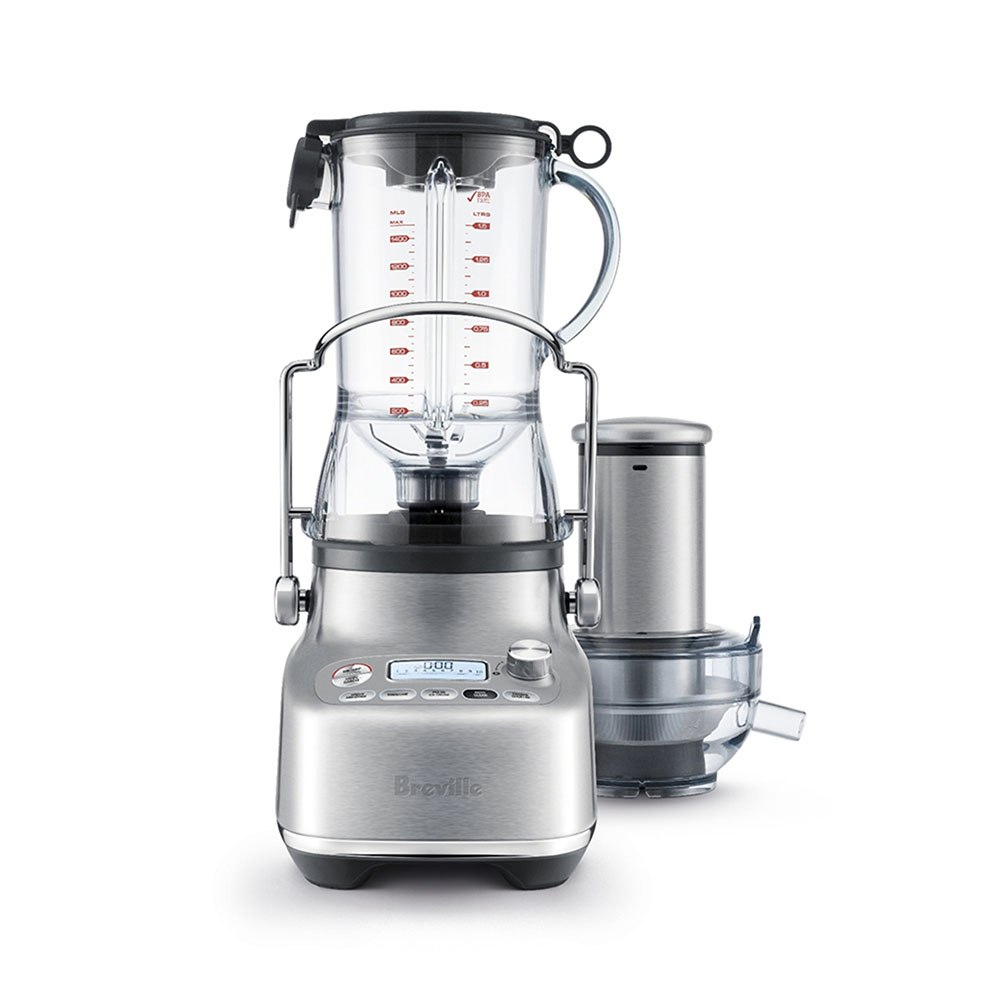

Accelerating the juicing trend is Breville’s 3X Bluicer Pro, coining a new micro-trend: “Bluicing,” which is mixing fresh juice with fresh blends using the same kitchen appliance. Users can combine freshly extracted juice into blends, while incorporating more fresh fruits and vegetables. It fits comfortably on the counter with a space-saving design that consists of one base with interchangeable parts — a juicing chute with an attachable pulp bin along with a blending jug that doubles as a carafe for juicing.
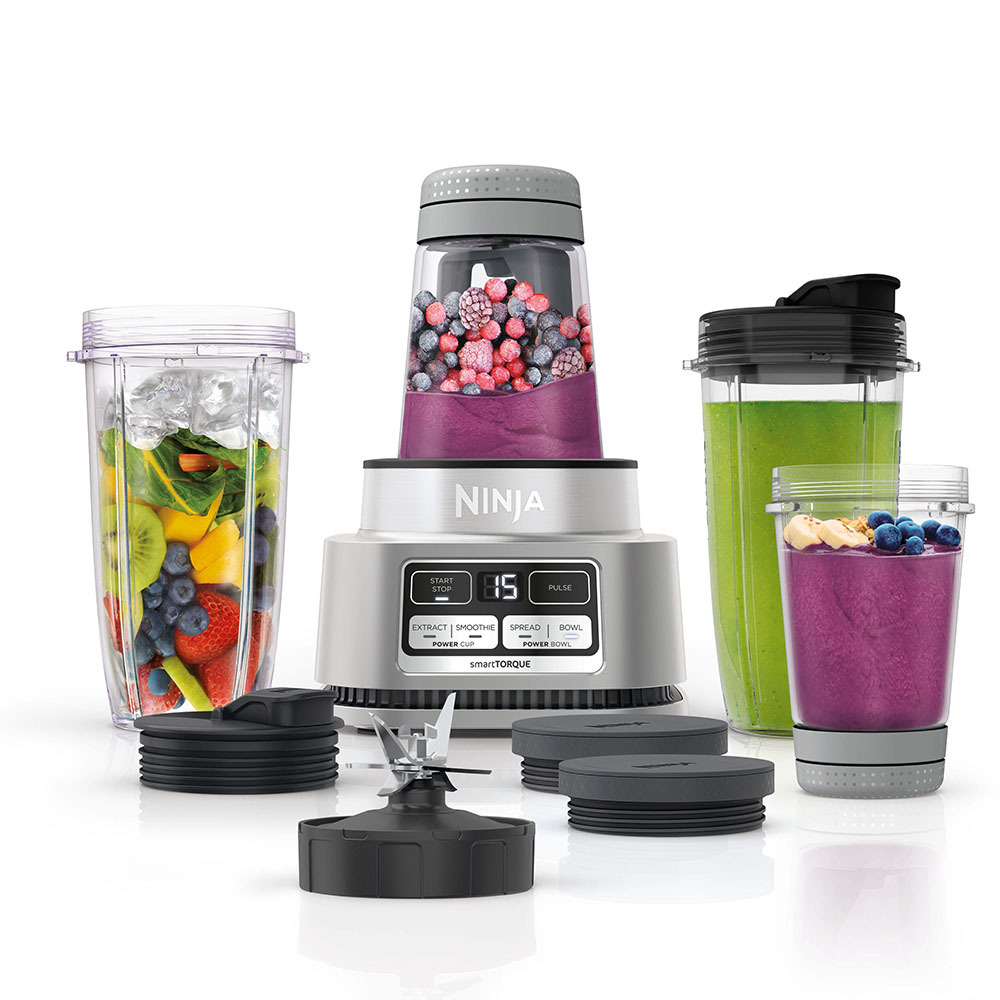

The Ninja Foodi Smoothie Bowl Maker and Nutrient Extractor is designed specifically for preparing smoothie bowls. The smartTORQUE technology blends and powers through the thickest ingredients at high speed without stalling or the need to stir or shake, making the creation of a smoothie bowl quick and easy. The Ninja Foodi Smoothie Bowl Maker and Nutrient Extractor also features a built-in tamper, which pushes ingredients towards the blades for perfect, spoon-thick smoothie bowls. The Auto-iQ programs allow you to create one-touch bowls.


The GE Profile 30-inch Smart Slide-In Front-Control Induction Range with In-Oven CookCam allows users to live stream the contents of their ovens to any smart device. The video-guided recipes from chefs work with the precision cooktop sensor technology on the cooktop to automatically adjust cooking time, temperature and pace. GE Profile’s over-the-range interactive smart screen and ventilation system, the Kitchen Hub, even allows users to calculate the nutritional value of meals, store the data in recipe favorites and/or send it to other connected devices.
Summary
- While consumers indulged in unhealthful foods at the beginning of the pandemic, there has been a shift toward more healthful choices; quick and easy meal prep is key.
- Kitchen appliance sales have grown 30 percent; air fryers take the lead.
- Consumers will continue to choose more nutritious meals as medicine, health, and wellness remains top of mind.
WHAT’S UP
What's Up?
We ask industry leaders to share their views
on business today, their top priorities, and what
currently concerns them most.
COMPILED BY TONY MONTELEONE


Robin Raskin
Founder, VEG (Virtual Events Group
1. What’s been happening in the last couple of months in your business sector?
What hasn’t been happening? The events business transformed overnight from one that was mostly in-person live events to one that was mostly online and virtual events. As we emerge from the pandemic, the scales will shift to events that are essentially digital-first, with in-person meetings that are smaller and more intimate.
2. What excites you most about the next two months as it relates to your business? What most concerns you?
Same answer to both questions. I pivoted and took a big bet on the ongoing sustainability of every company having a virtual component to their traditional events. And I pivoted further to believe I could create an organization at the center of it for all the stakeholders, as they make digital part of their core business strategy. Normally not the gambling type, I guess I’m now old enough to believe in myself enough to make this happen. If not now, when, as they say.
3. What is the most important thing for our readership to know about your business?
We’re building a community for everyone who cares about making better virtual events, now and in the future. It has newsletters, meetups, reviews, and networking that are spawning this new industry.


Dealerscope Publisher Tony Monteleone and Robin Raskin


Toni Sabatino
CEO, Toni Sabatino Style
President, NKBA Manhattan Chapter
1. What has been happening in the last couple of months in your business sector?
The last couple of months in the home remodeling, building and specifically kitchen and bath sector have been interesting, to say the least. The pandemic created new needs, exposed flaws at home as well as challenges in vital supply chains. Appliances, spray foam and other building materials have been in short supply, and lead times have increased. The home has become much more vital to our way of life than ever before. Working from home, home school and all the other activities that the pandemic has forced us to do in our personal spaces — cooking more, working out, entertaining ourselves and storing all that we need to accomplish these goals — has posed new challenges to many, for sure! Problems with IT, network and broadband issues have also surfaced as people scramble to use the internet for EVERYTHING! Communication, shopping, streaming, social networks as well as work and school from home have forced many to make needed adjustments in their infrastructure.
2. What excites you most about the next two months as it relates to your business? What most concerns you?
I am excited about the home becoming the haven. I see that homes need to nurture inhabitants, and the “smart home” has become a realistic goal for so many people. Innovations in operating systems, addition of voice control, integration of security and safety as well as “smart appliances” make the home design business and the world of technology ever more intertwined.
3. What is the most important thing for our readership to know about your business?
The kitchen and bath business are evolving. Business models are changing. While certain showrooms will always have a place, people are becoming more confident in working remotely and shopping online. The team approach, dedicated to creating a great user experience for the client as well as a smoother construction phase process, is also becoming more common. Networking between trades has become more important as we have not been able to meet in person at trade shows. The designers have also realized how necessary integration of technology has become to the success of projects as well as their business.


(From left to right) Alice Schmalzl, COO CT Lab Global Media, Dawn Pratt, Robin Raskin. and Toni Sabatino
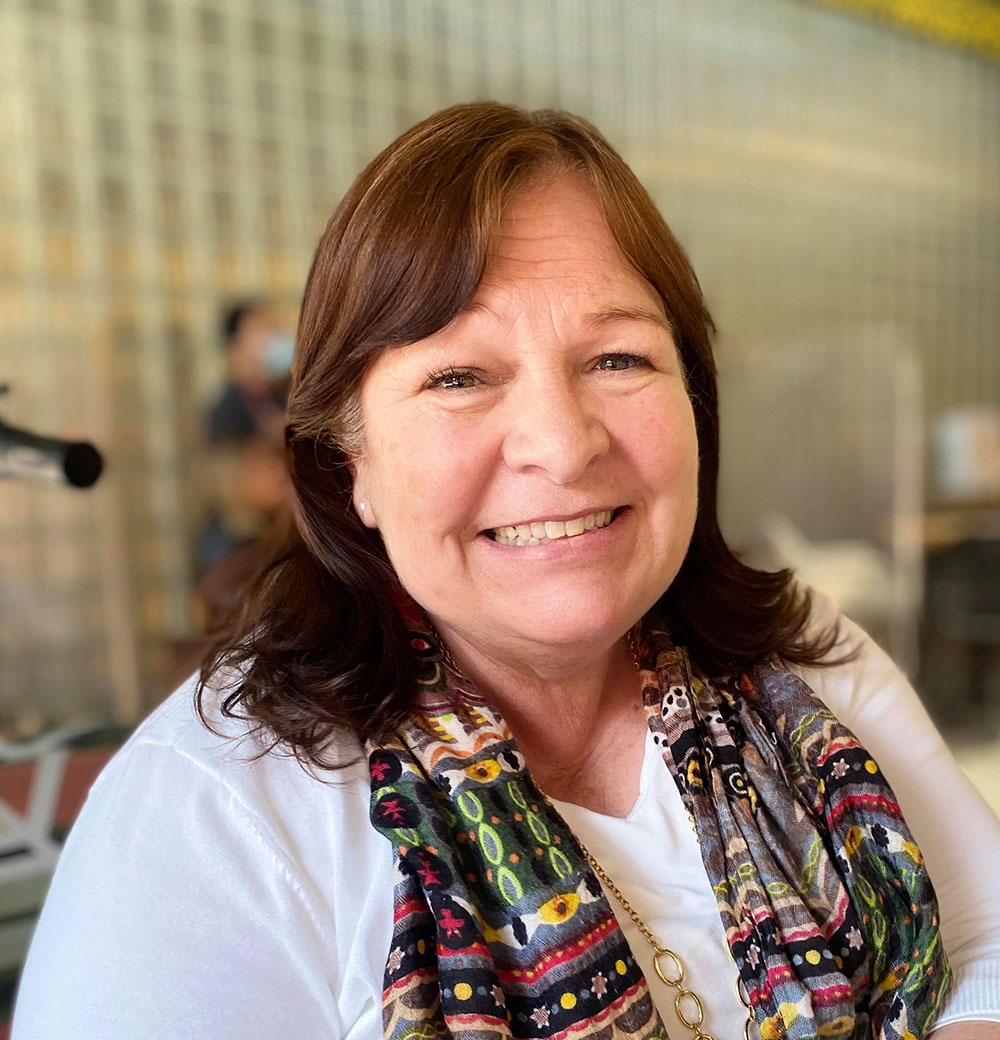

Dawn Pratt
CEO and Founder
Tech Up for Women
1. What has been happening in the last couple of months in your business sector?
Wow! The technology sector has been rapidly changing during COVID, creating so many new ways to do business. There have been accelerated trends we’ve seen at mass scale. [We at] Global Training & Events Group are happy to be providing a global platform to stay up to date with these advances.
I have to admit that I, myself, even have a hard time keeping up with the daily advancements in the technology business, given the speed at which we’re seeing new offerings! This speed of innovation, of course, is a beautiful thing. Our current offerings include Tech Up Talks Webinar Series, Tech Up for Women Conferences, and Tech Trends weekly updates, all of which help keep everyone up on the latest trends.
2. What excites you most about the next two months as it relates to your business? What most concerns you?
As we come out of the pandemic, there are excellent opportunities to “refresh” how everyone does business through the use of technology. I am particularly watchful and passionate about the technological advances in the medical sector as we collectively fight a truly global pandemic. What most concerns me is that it will take longer for us all to get back to working together again, face to face.
3. What is the most important thing for our readership to know about your business?
We provide “tech up” opportunities to advance yourself and your business. The world is changing so fast, new technologies are evolving rapidly, and we all need to find new ways to grow ourselves, our careers, and our companies. Our Tech Up For Women, techupforwomen.com and Tech Up Smart Buildings, techupsmartbuildings.com are creating new ways to find these resources to stay current.
STAT SHOT
CE Industry By Numbers
…a year is the fee to join Best Buy Beta, the CE retailer’s new membership program that includes special pricing, free shipping and delivery, free installation, and two years of product protection (including AppleCare, discounted repair rates, 24-hour tech support, and a dedicated concierge service for any questions).
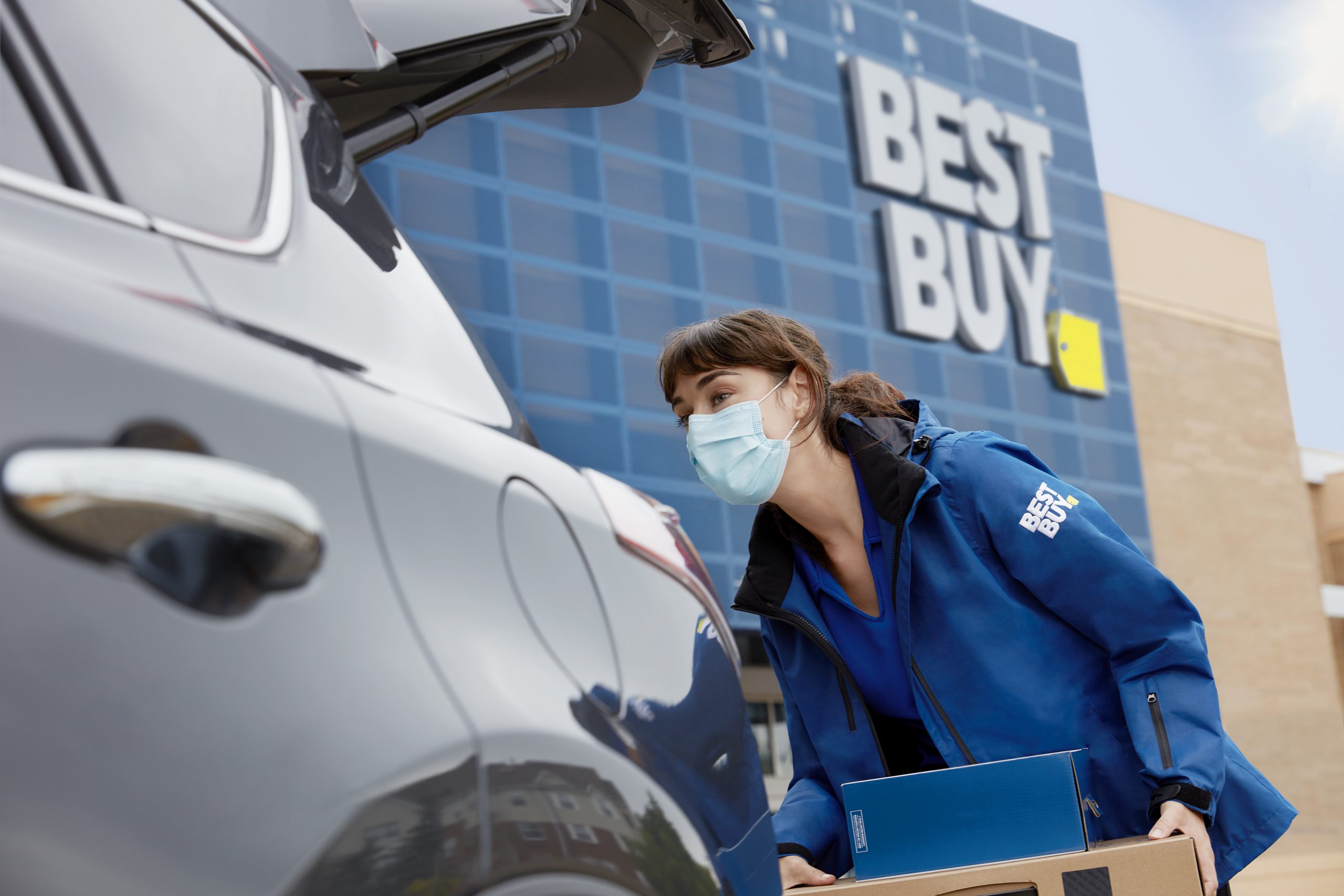

…of advertisers on Facebook are from the retail category, with Amazon and big-box stores among the biggest spenders. Retail is now the number one sector among advertisers on the platform.
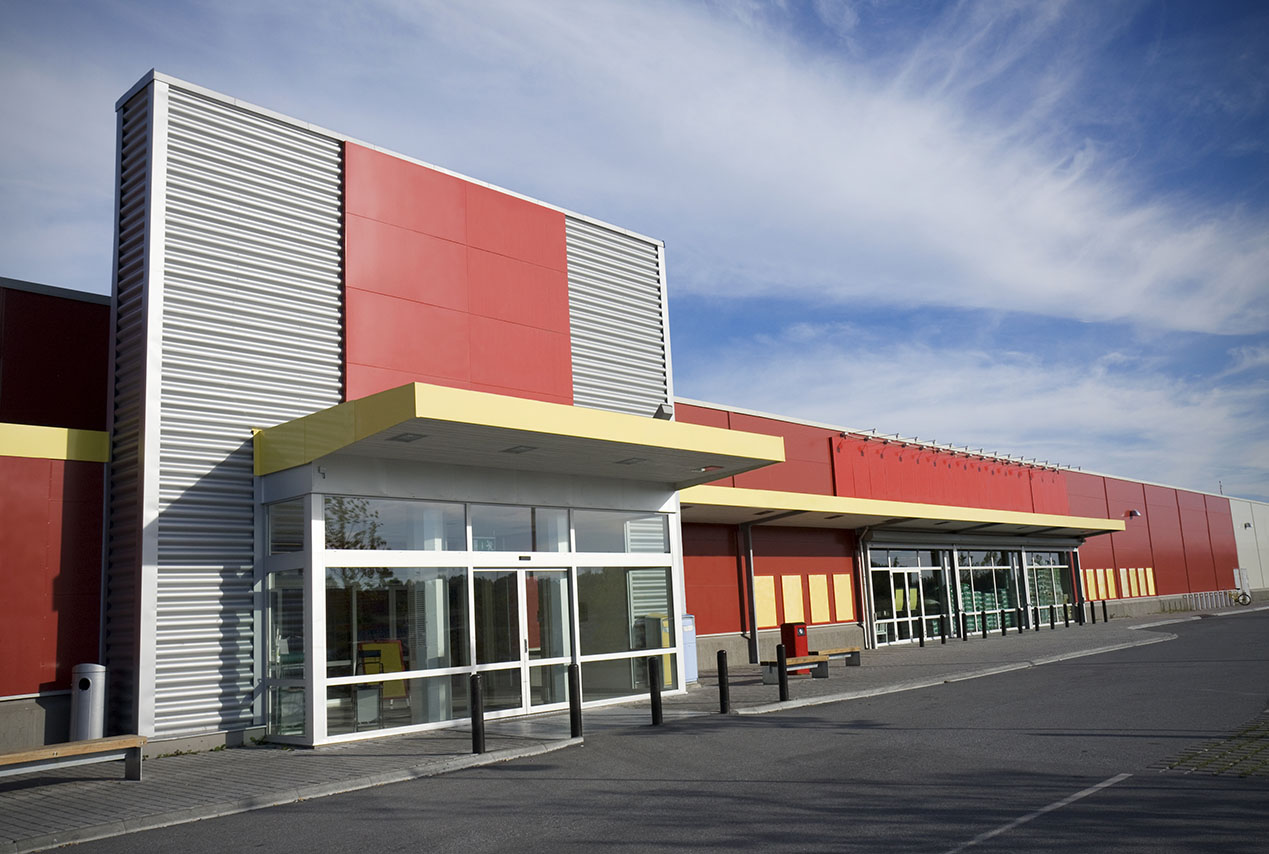

…mm (0.4 inches), which is how thin the new 24-inch iMac is at its thinnest point. Since it uses the compact and powerful M1 chip, Apple’s newest desktop computer has 50 percent less volume than previous generations.


($50 billion) …set aside to help increase U.S.-based semiconductor manufacturing as part of President Biden’s $2.3 trillion infrastructure proposal. In addition to supporting domestic semiconductor production, the spending addresses a worldwide chip shortage that is expected to last until next year.


($340 million) …global smartphone units shipped in the first quarter of 2021, which is 24 percent more than the first quarter of 2020 and the highest surge since 2015. Strategy Analytics, which conducted the research, attributes the growth to heavy 5G promotion in China and upgrades of older phones.


CONSUMER TECHNOLOGY CALENDAR
Upcoming Events
May 7-15, 2021
Philly Tech Week:
2021.phillytechweek.com
May 12, 2021
Parks Associates CONNECTIONS 2021:
Supporting Remote Workers
with a Smarter Home:
parksassociates.com/events/connections-us
May 25, 2021
Parks Associates CONNECTIONS 2021:
State of the Smart Home;
Pro-Installers and Home Technologies:
parksassociates.com/events/connections-us
May 26, 2021
Parks Associates CONNECTIONS 2021:
Home Services Opportunities;
Sensor Innovation and AI — Driving New Use Cases:
parksassociates.com/events/connections-us
June 12-15, 2021
E3 2021:
e3expo.com
Find all current consumer technology events
and event updates and at
dealerscope.com
DEALERSCOPE PODCAST
Welcome to the Dealerscope Podcast – Your Source for all B2B trends in Retail, Tech and Biz!
In the high-strung consumer electronics retail business, it can be hard to take a moment to step back and breathe. The Dealerscope Podcast gives CE retail leaders the chance to kick back, relax, and talk shop in a casual setting.
Refresh Your Subscription!
Get Dealerscope and Connected Design delivered to your doorstep or to your email.
How, where and when we work has changed dramatically. We realize that these changes in your work habits may have impacted how you receive your issues.
Click on the links below to update how and where you receive your issues! Change your mailing address or request a change from print to digital, or just head to our websites.
PA OFFICE:
230 South Broad Street, 17th floor
Philadelphia, PA 19102
NY OFFICE:
31 Hudson Yards, New York, NY 10001
E-Mail: dealerscope@ctlab.media
EDITORIAL
EDITOR IN CHIEF
Tom Samiljan
tsamiljan@ctlab.media
SENIOR MANAGING EDITOR
Stephanie Adamow
sadamow@ctlab.media
CHIEF EDITOR DIGITAL CT LAB
Jessica Guyon
(267) 266-1432
jguyon@ctlab.media
CONTRIBUTING EDITORS
Jeff Dorgay
Nancy Klosek
John R. Quain
Paul Richards
CREATIVE
Astrid von Krenski
(940) 727 8595
avkrenski@ctlab.media
EDITORIAL OFFICES
230 South Broad Street, 17th Floor
Philadelphia, PA 19102
www.dealerscope.com
SALES & MARKETING
CHIEF OPERATING OFFICER
Alice Schmalzl
(940) 612-9581
aschmalzl@ctlab.media
PUBLISHER
Tony Monteleone
(718) 216-2046
tmonteleone@ctlab.media
PUBLISHER
Maryellen Oswald
(951) 677-9189
moswald@ctlab.media
SALES
Alexander Dailey
adailey@ctlab.media
SOCIAL MEDIA & VIDEO
Alexander Oswald
aoswald@ctlab.media
OPERATIONS MANAGER
Vicki Manucci
vmanucci@ctlab.media
CIRCULATION & DISTRIBUTION
Carrianne Ramsey
cramsey@ctlab.media
Reprints
Contact Publisher
List Rental, Postal/E-mail
Contact Publisher
Publisher of Dealerscope, and Connected Design
Copyright ©2021 CT Lab Global Media LLC
CT Lab Global Media is a diversified publisher of business and professional magazines. This publication is provided with the express understanding and agreement that the information and data within it will be solely for internal use and will not be used for the creation or updating of mailing lists for sale or distribution to third parties. Printed in the U.S.A.



